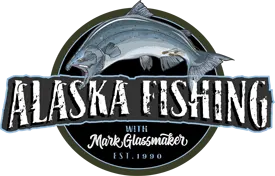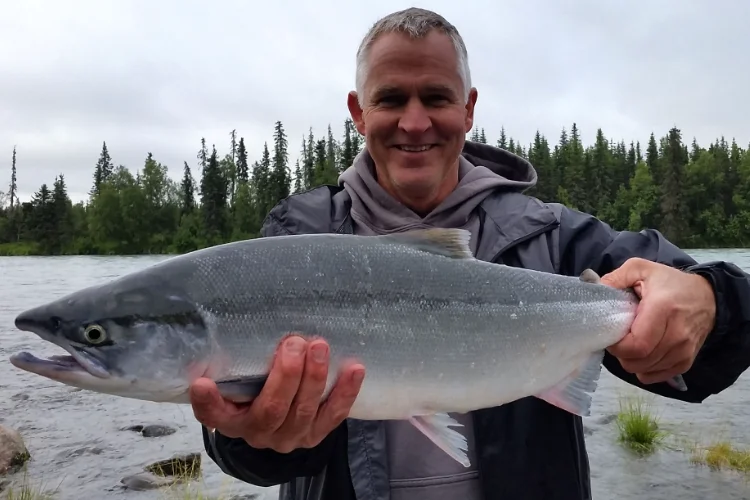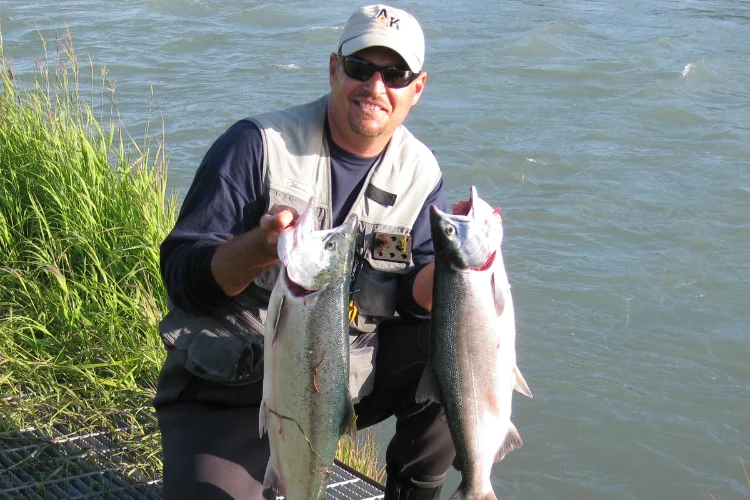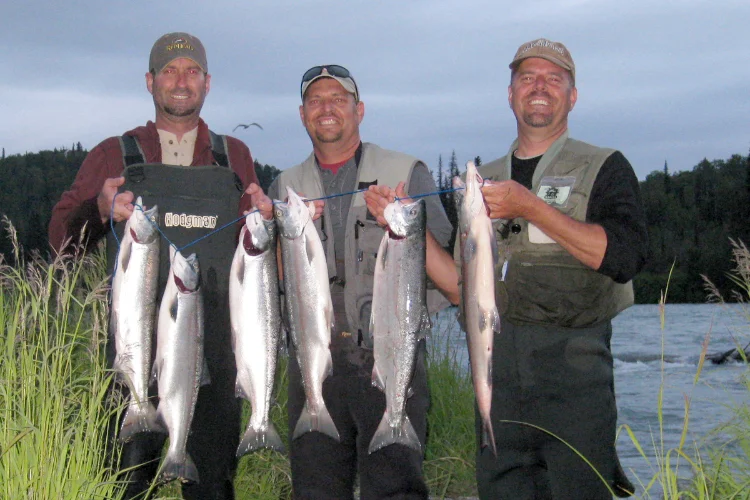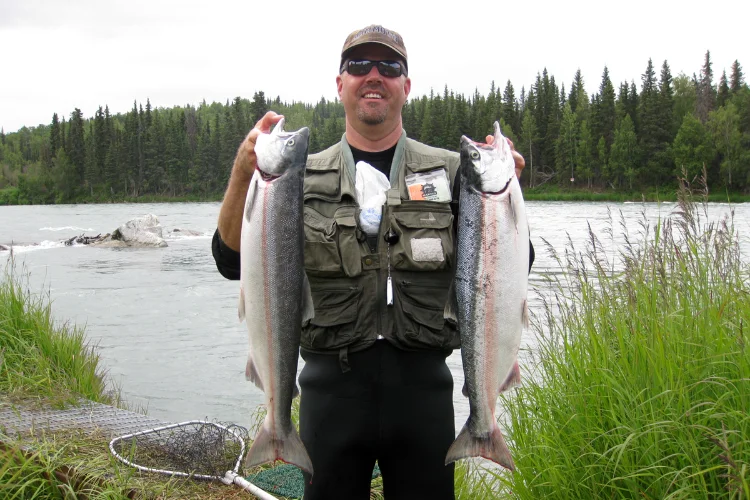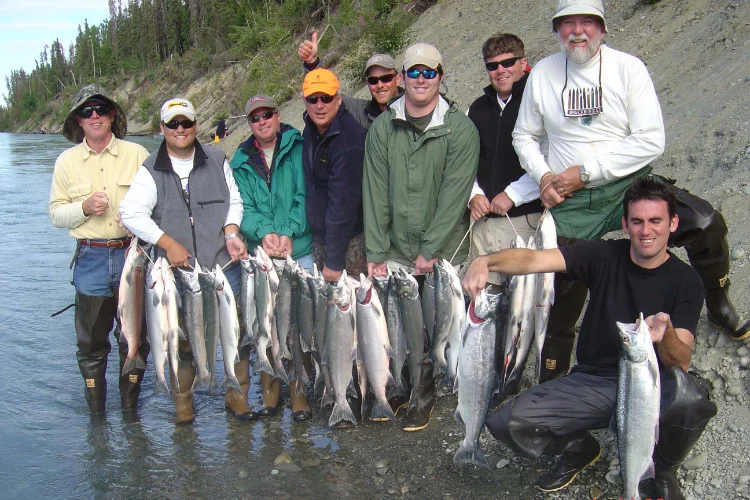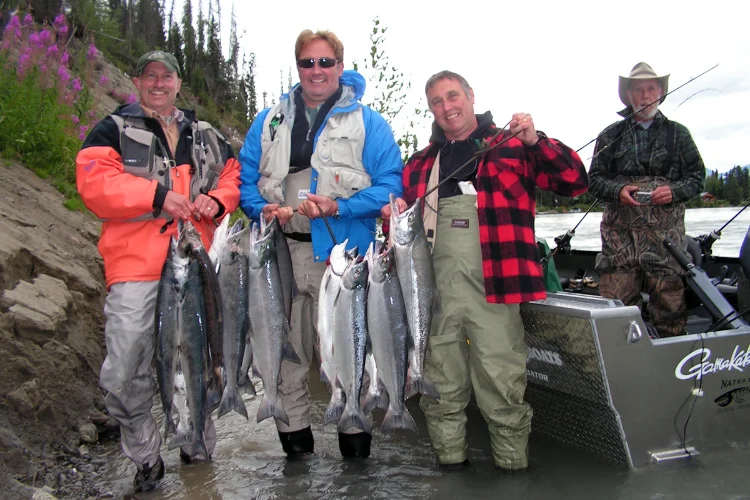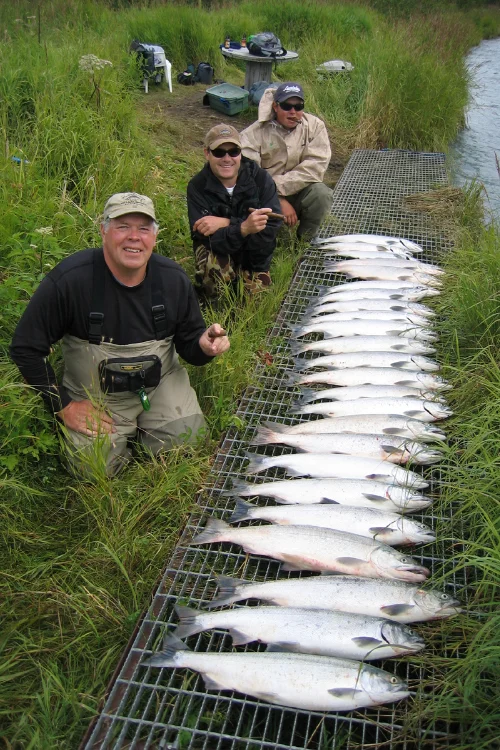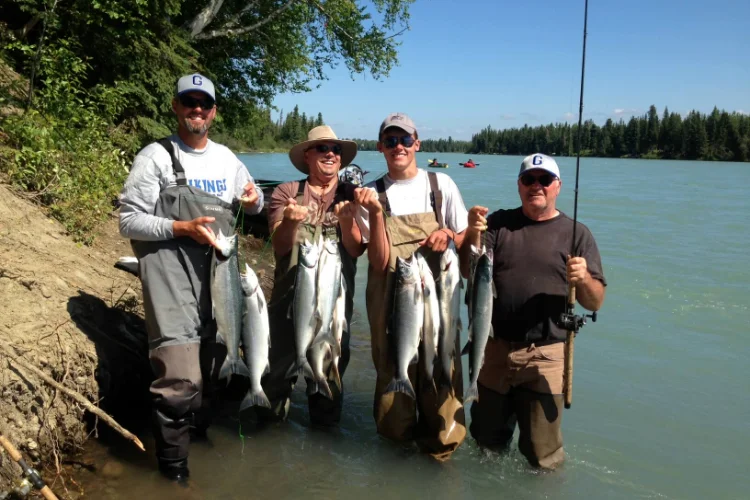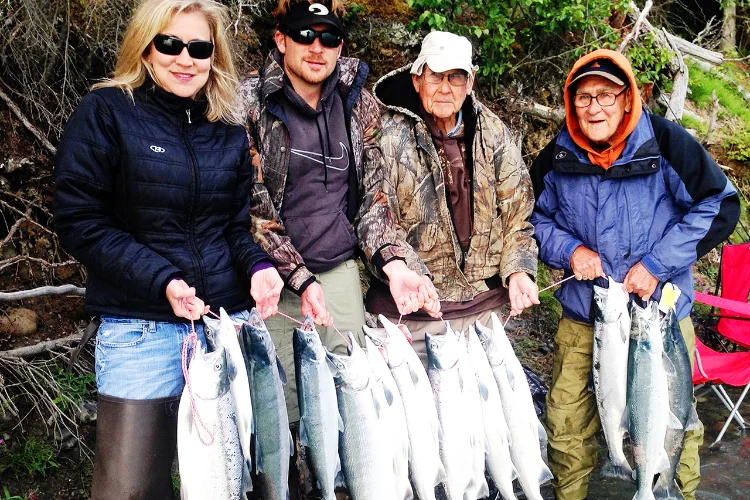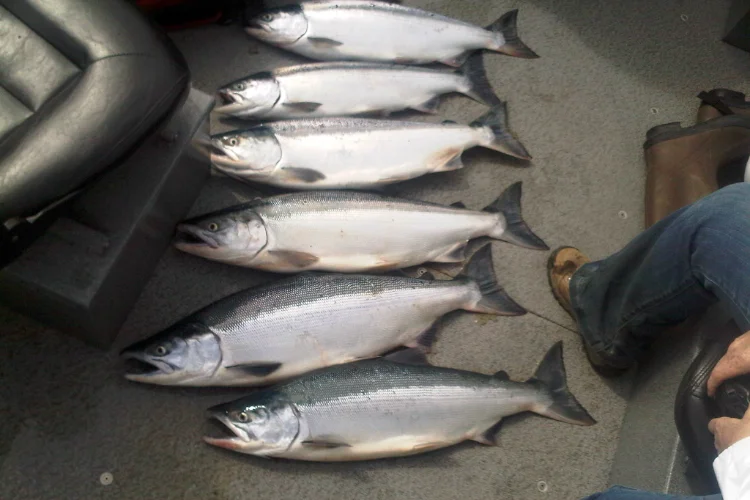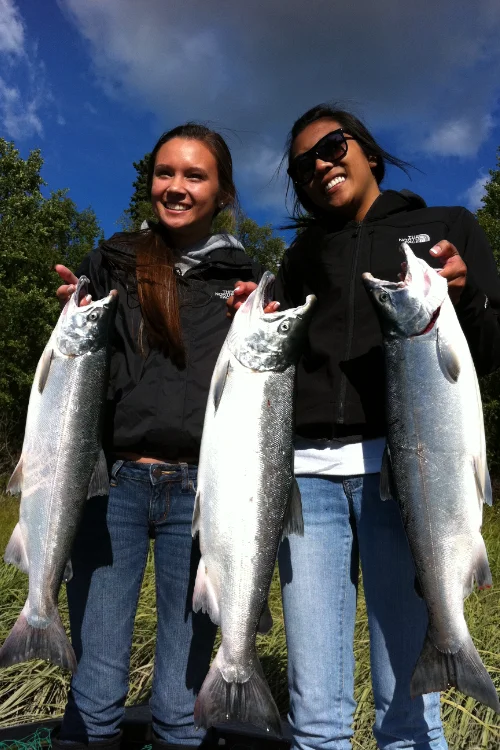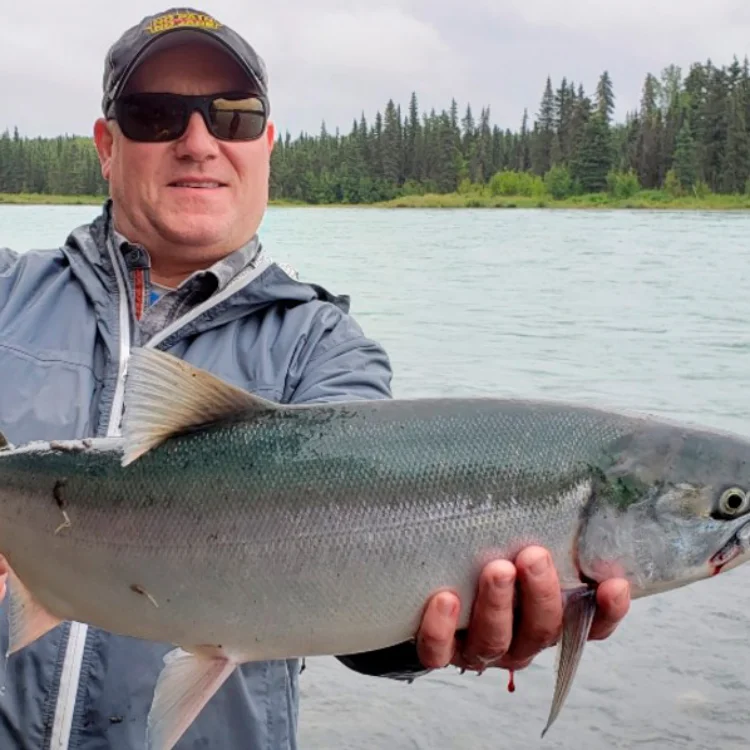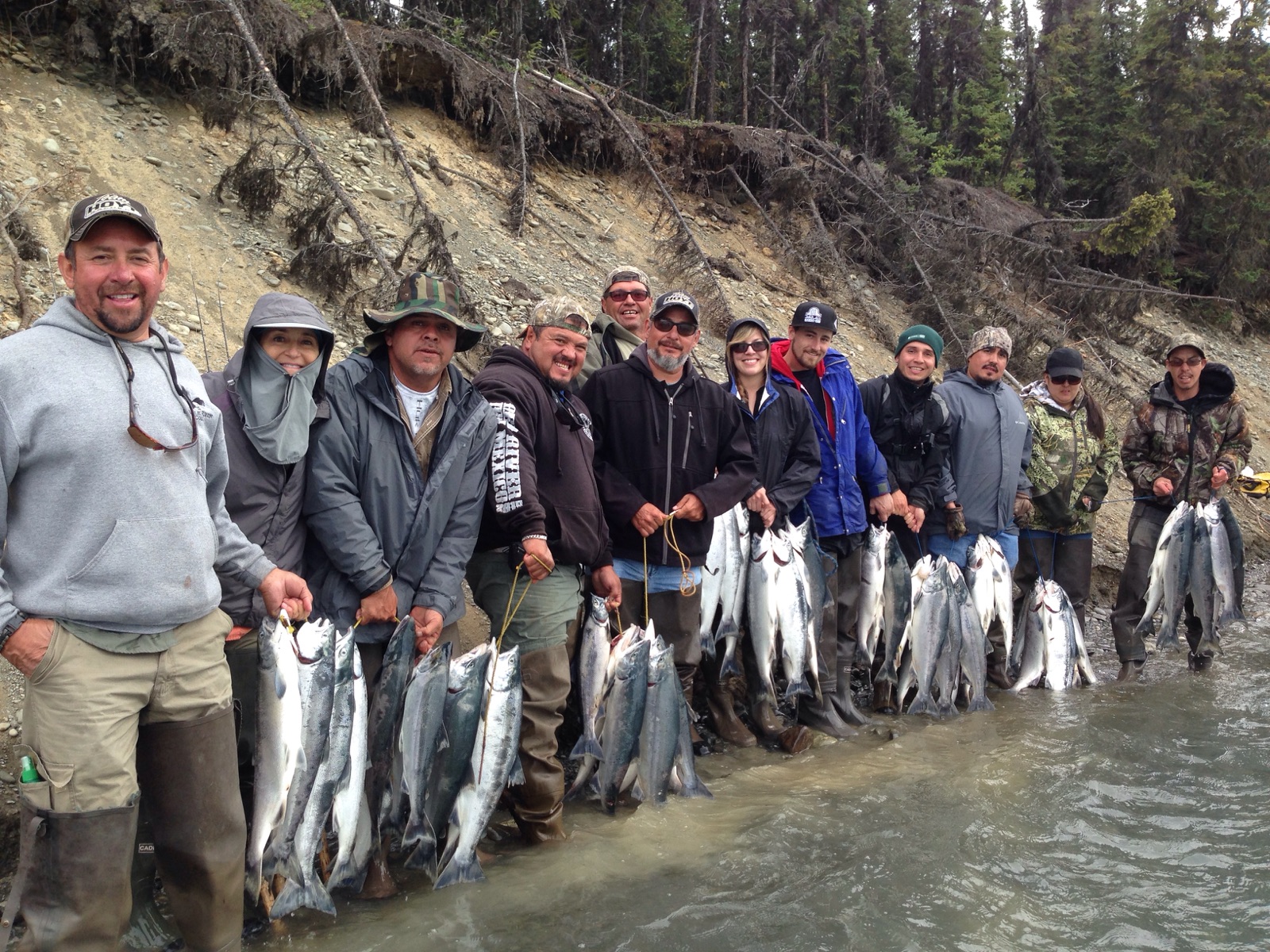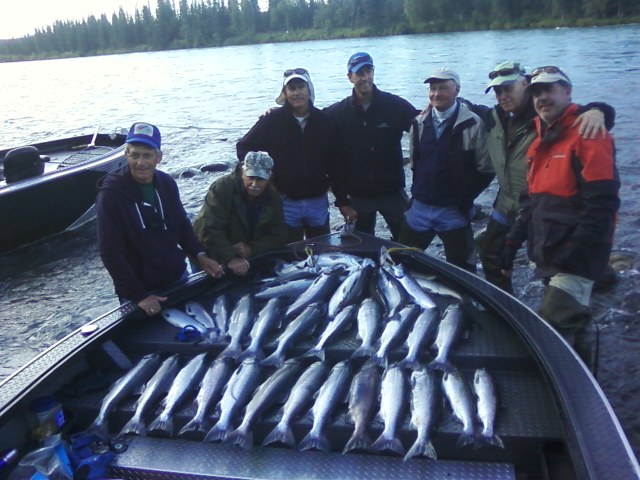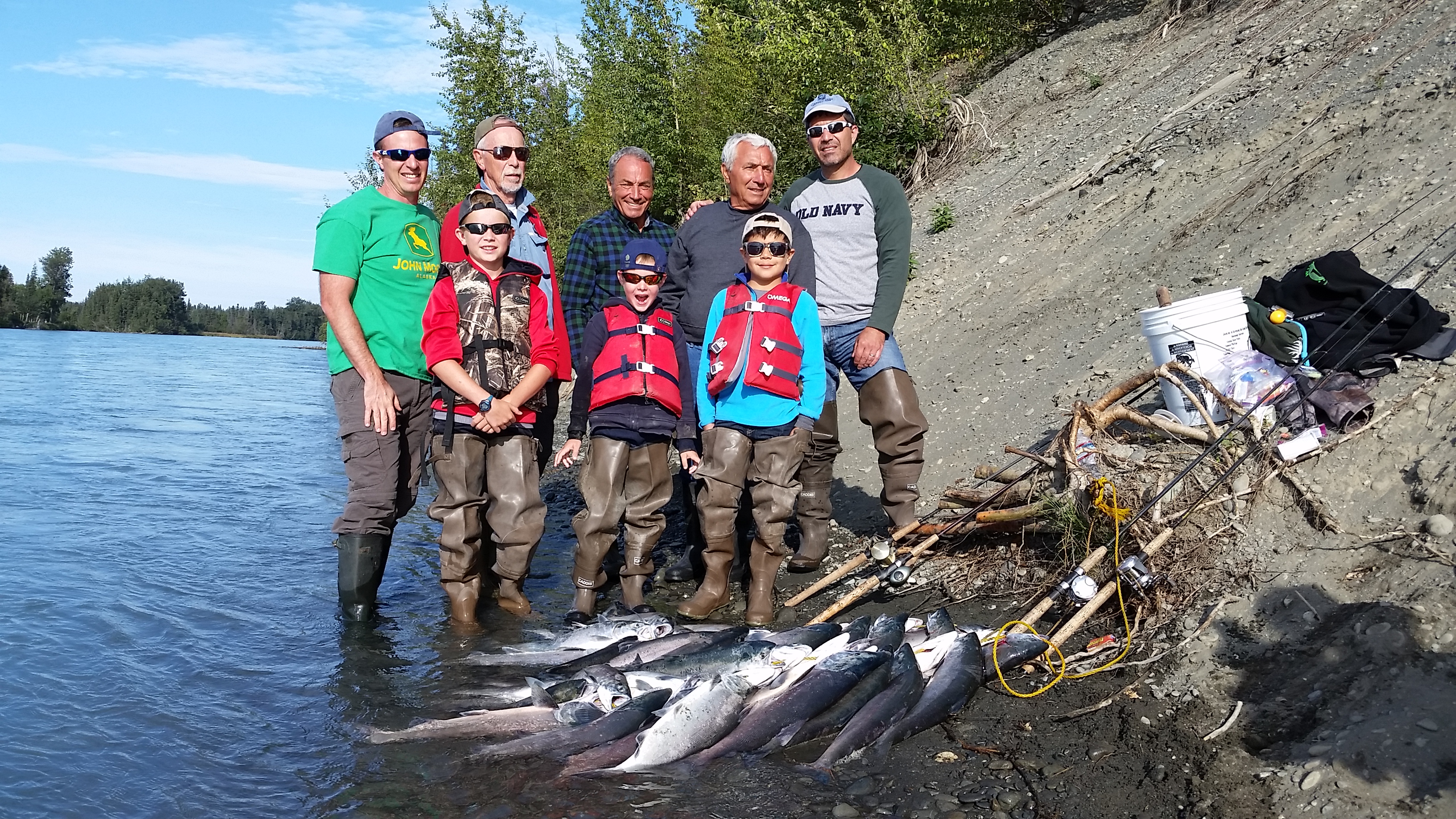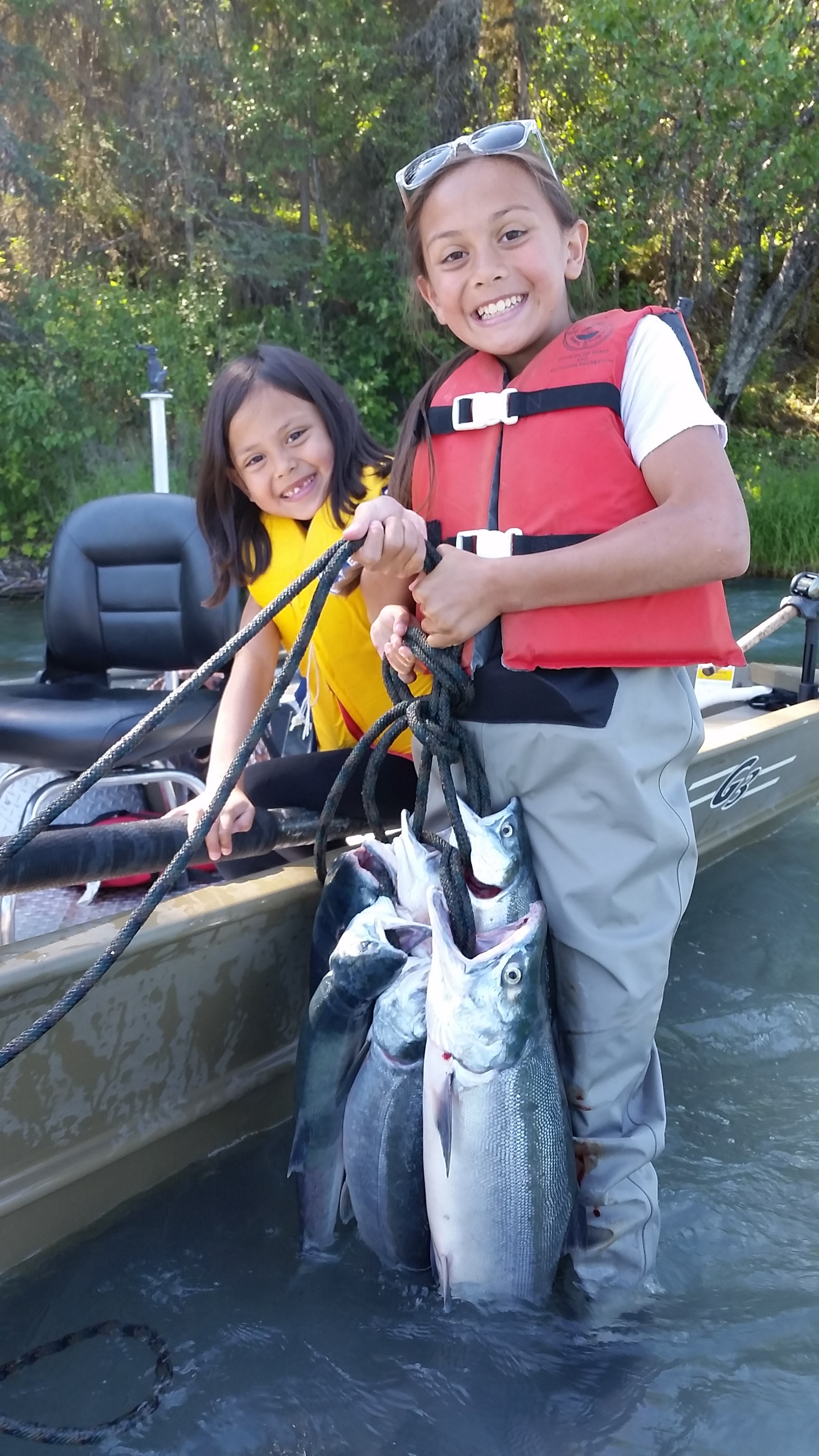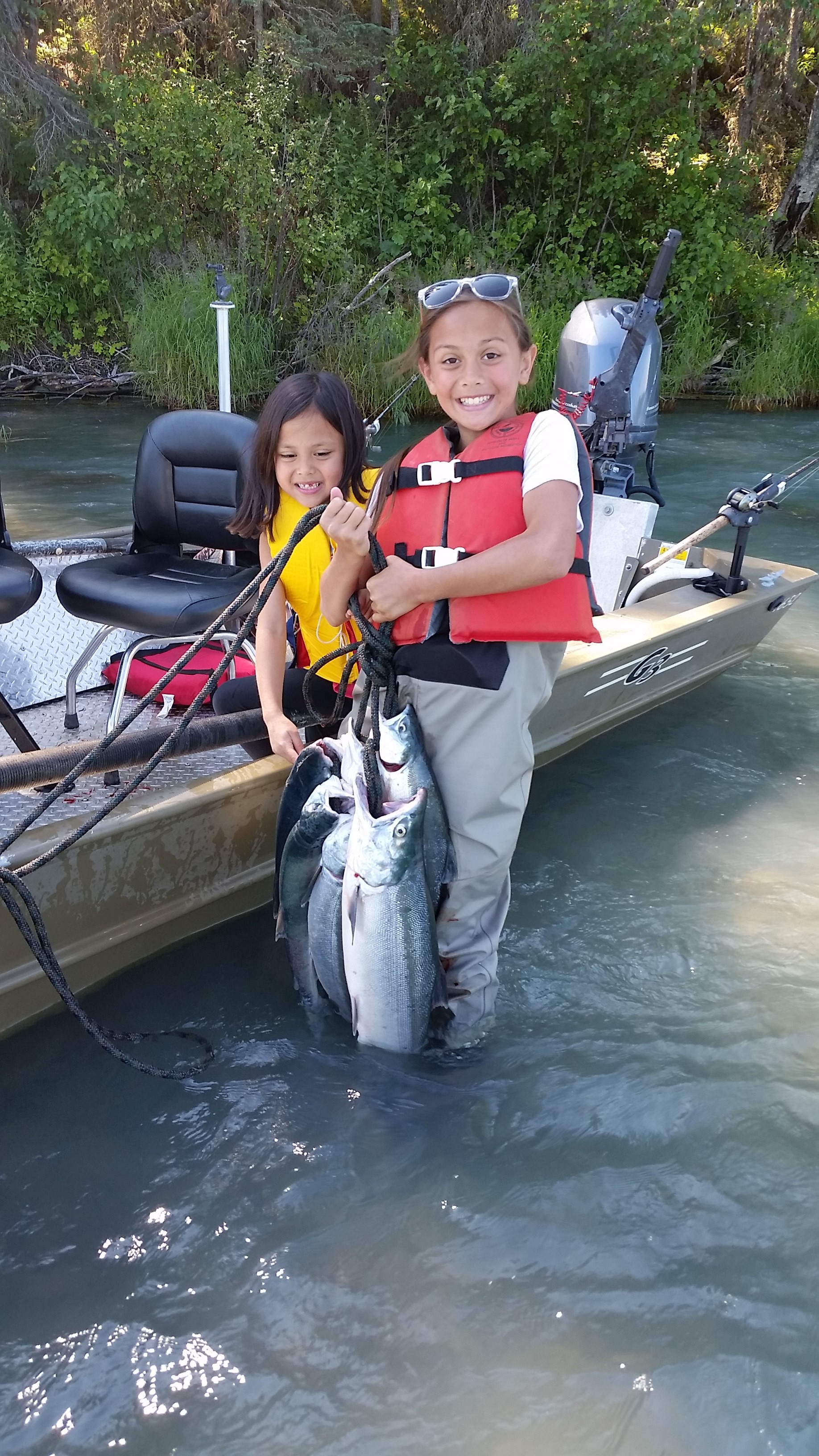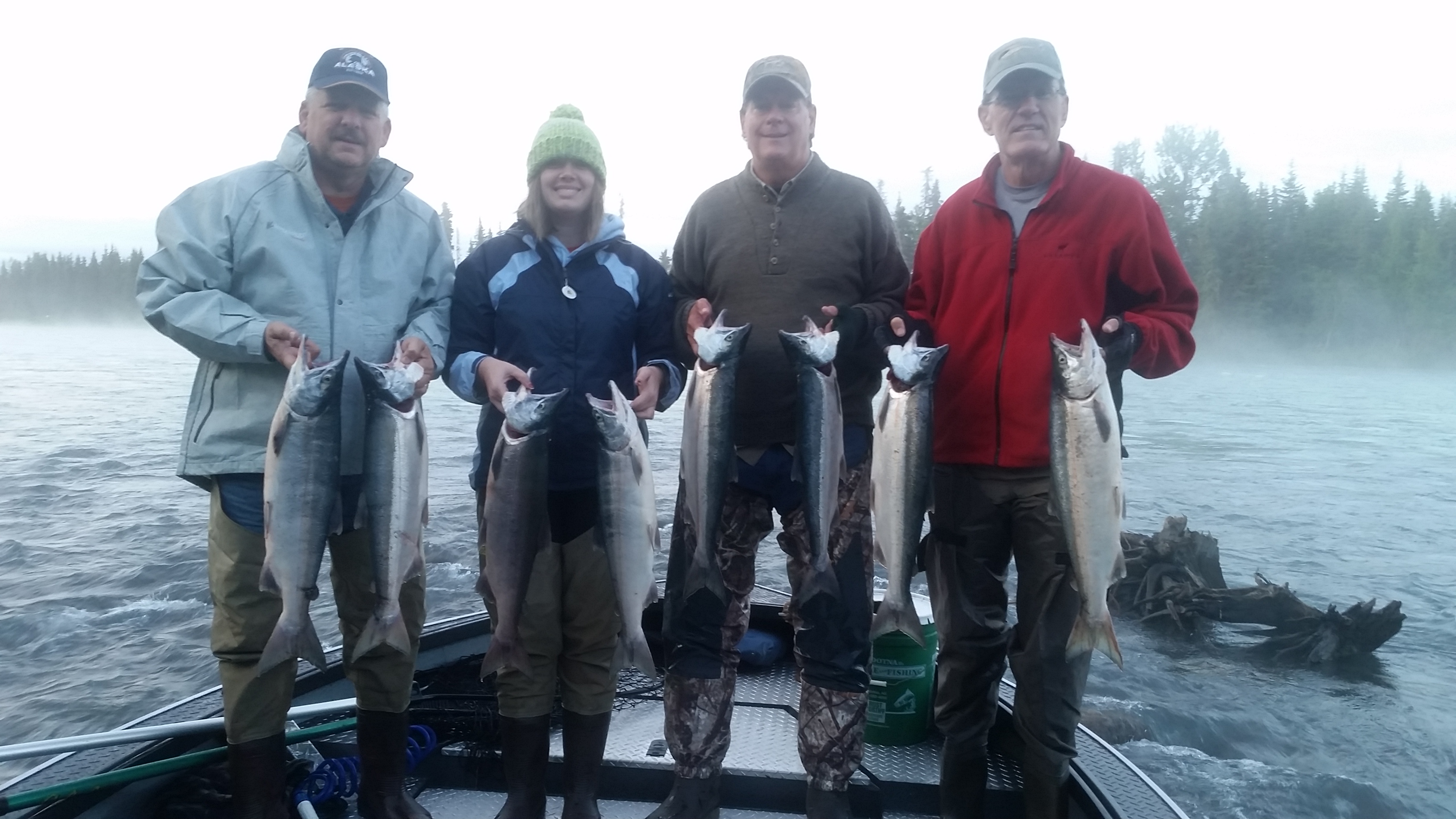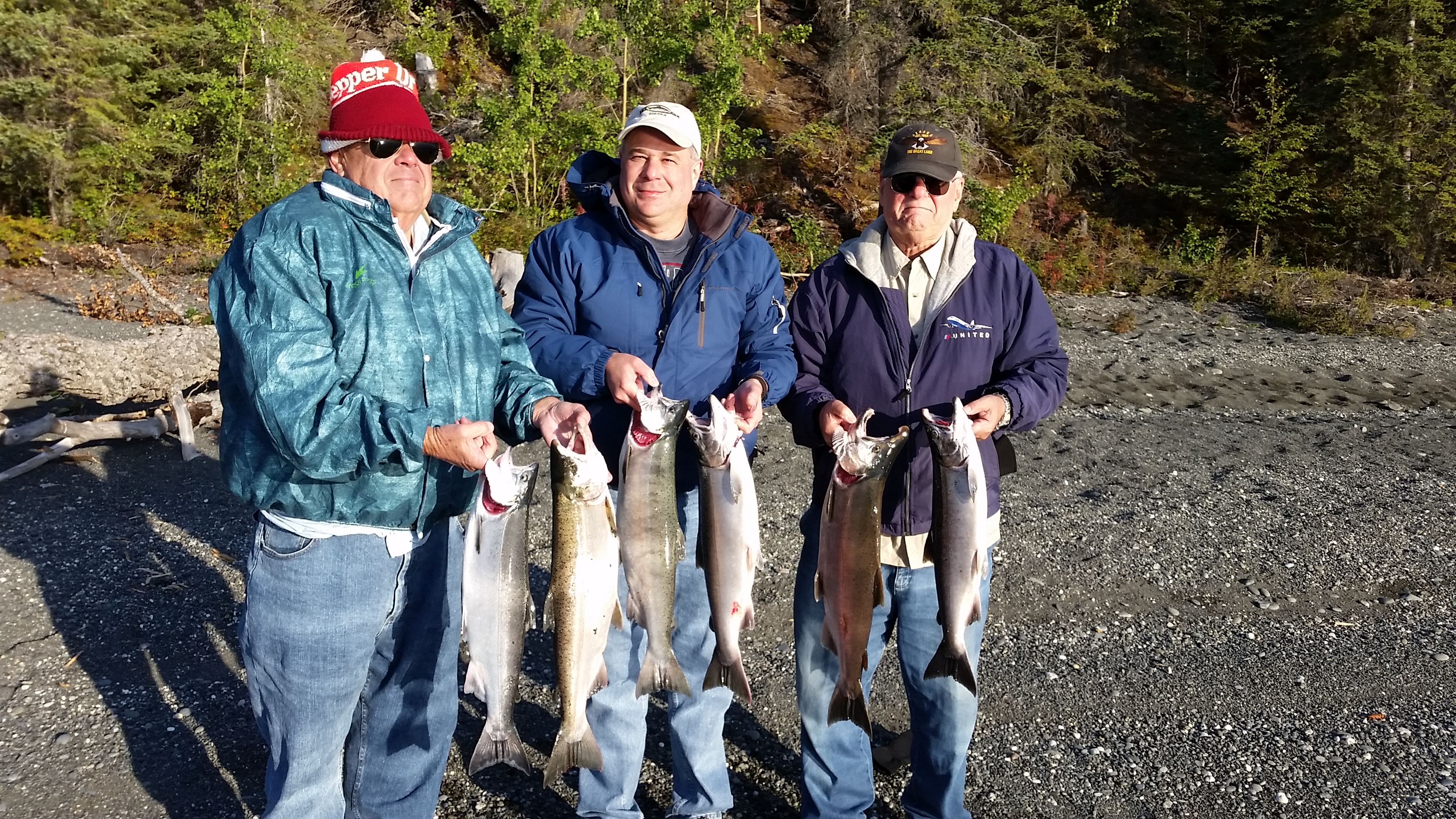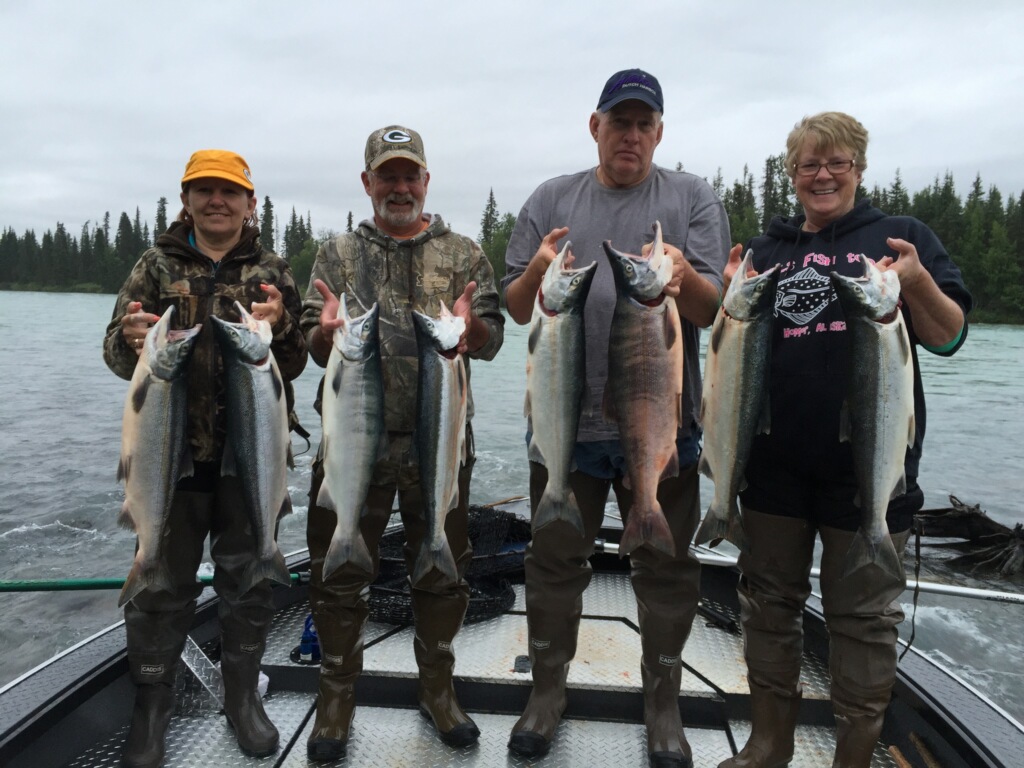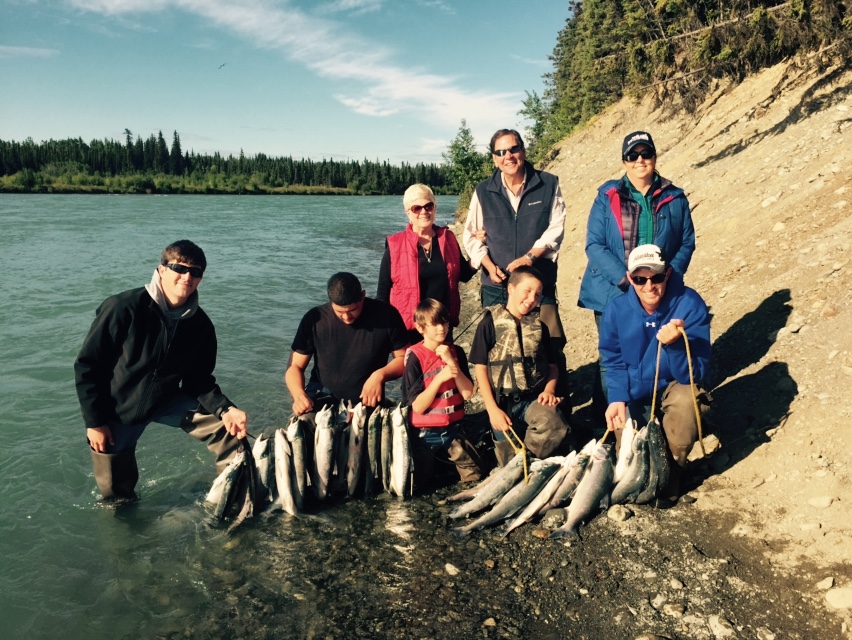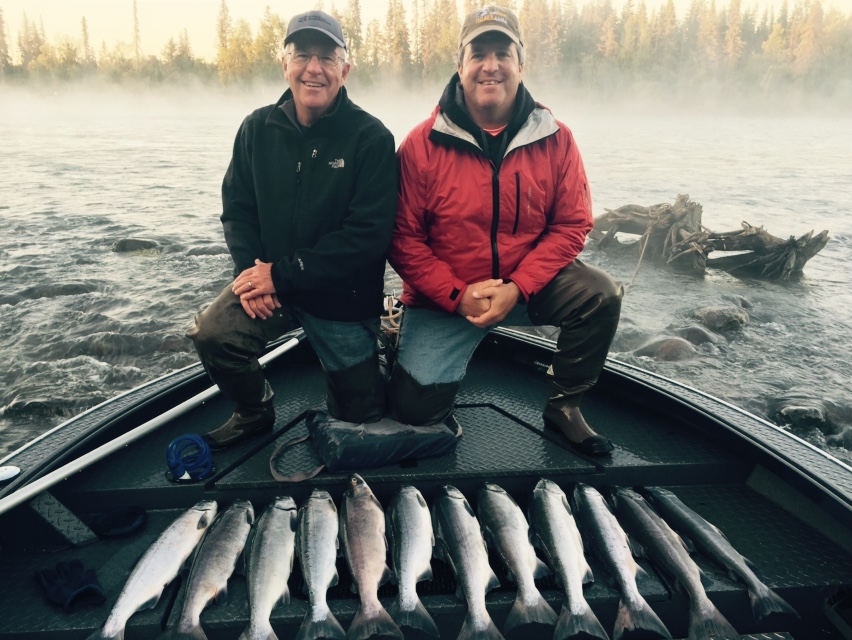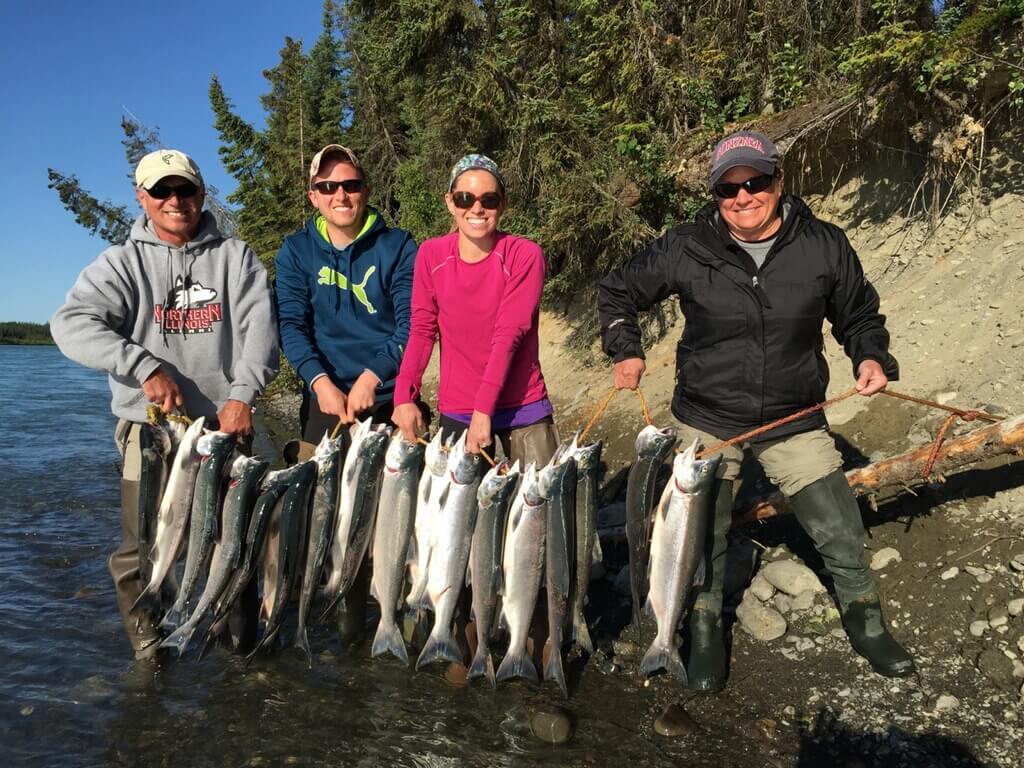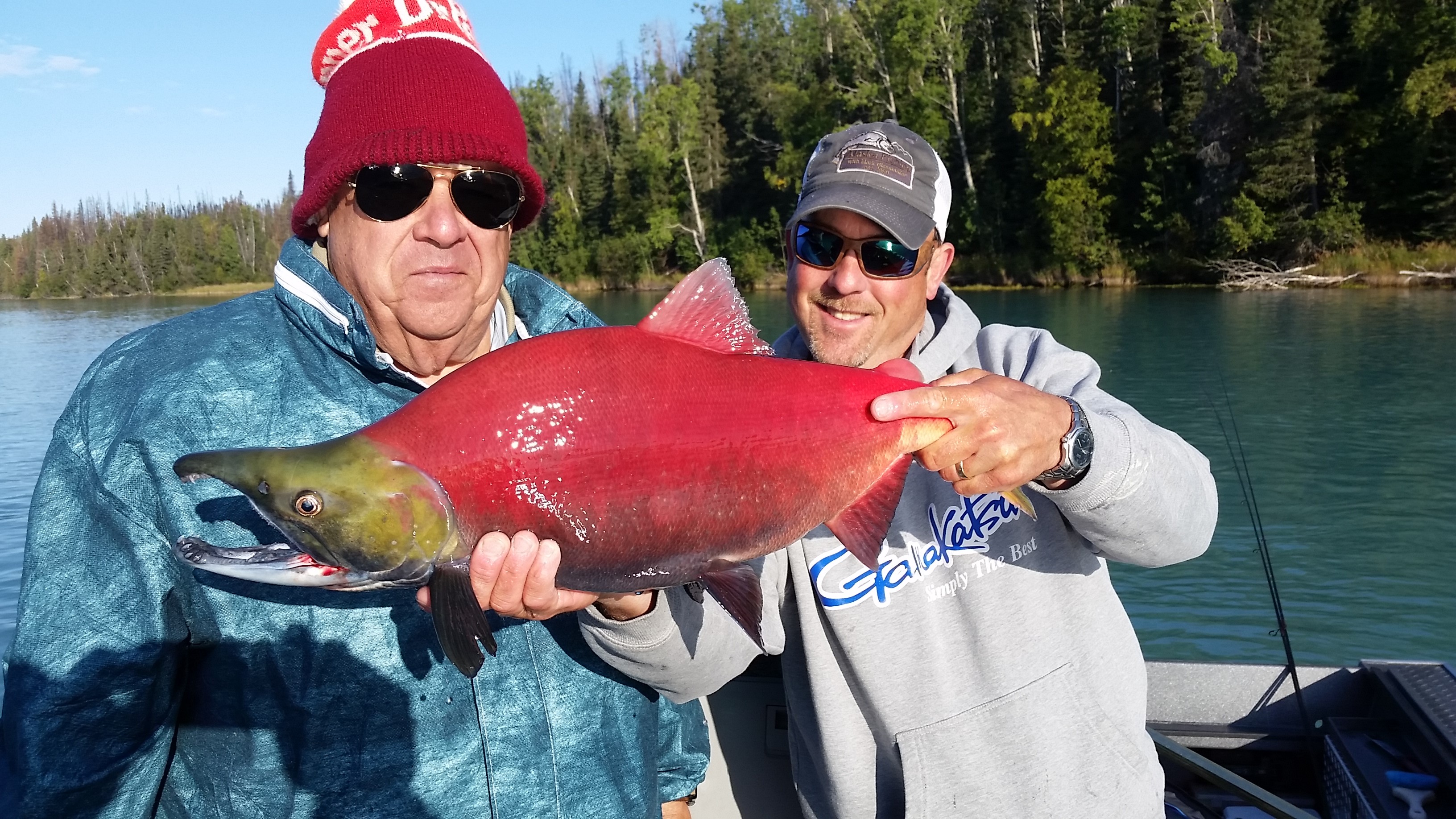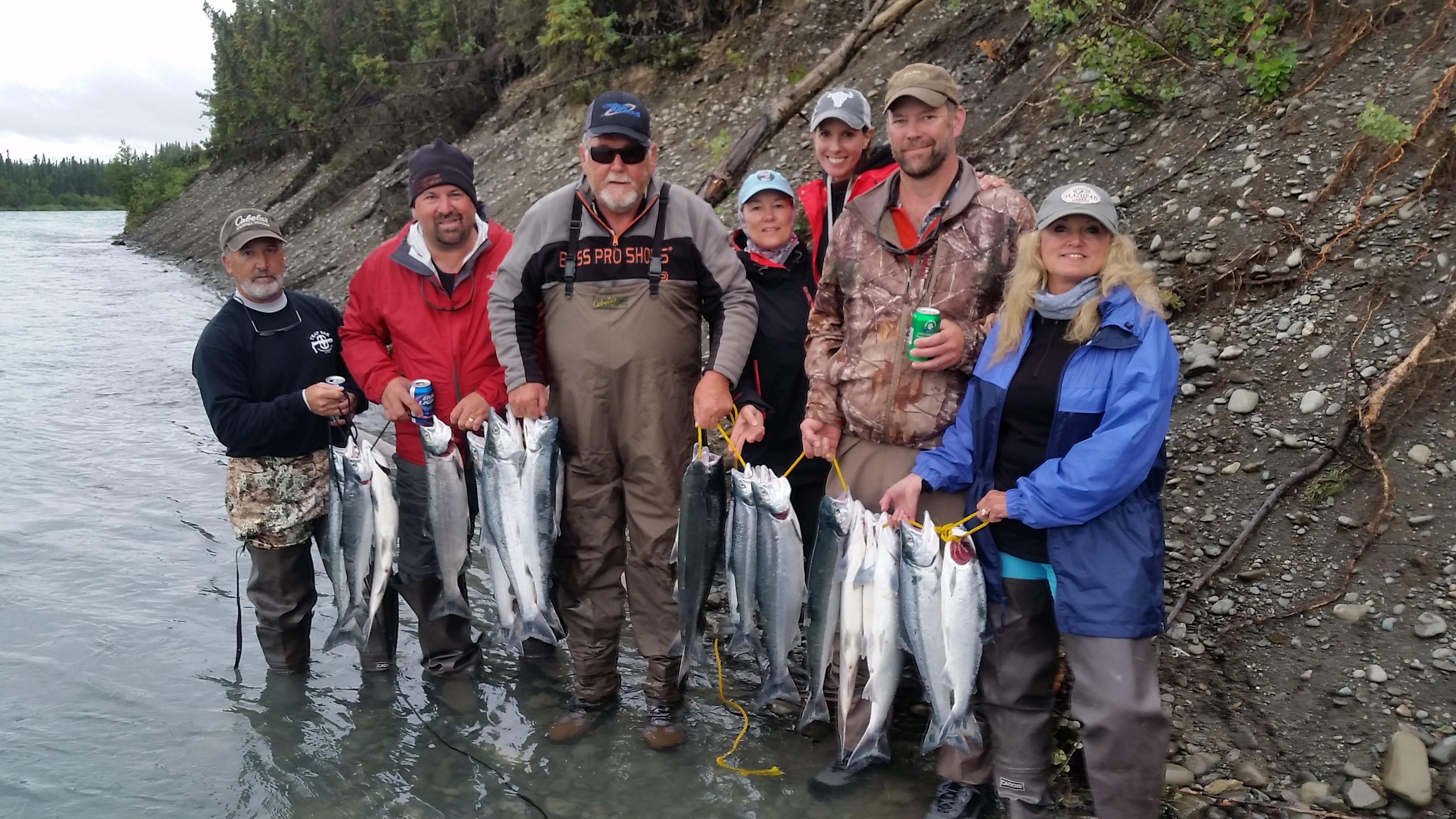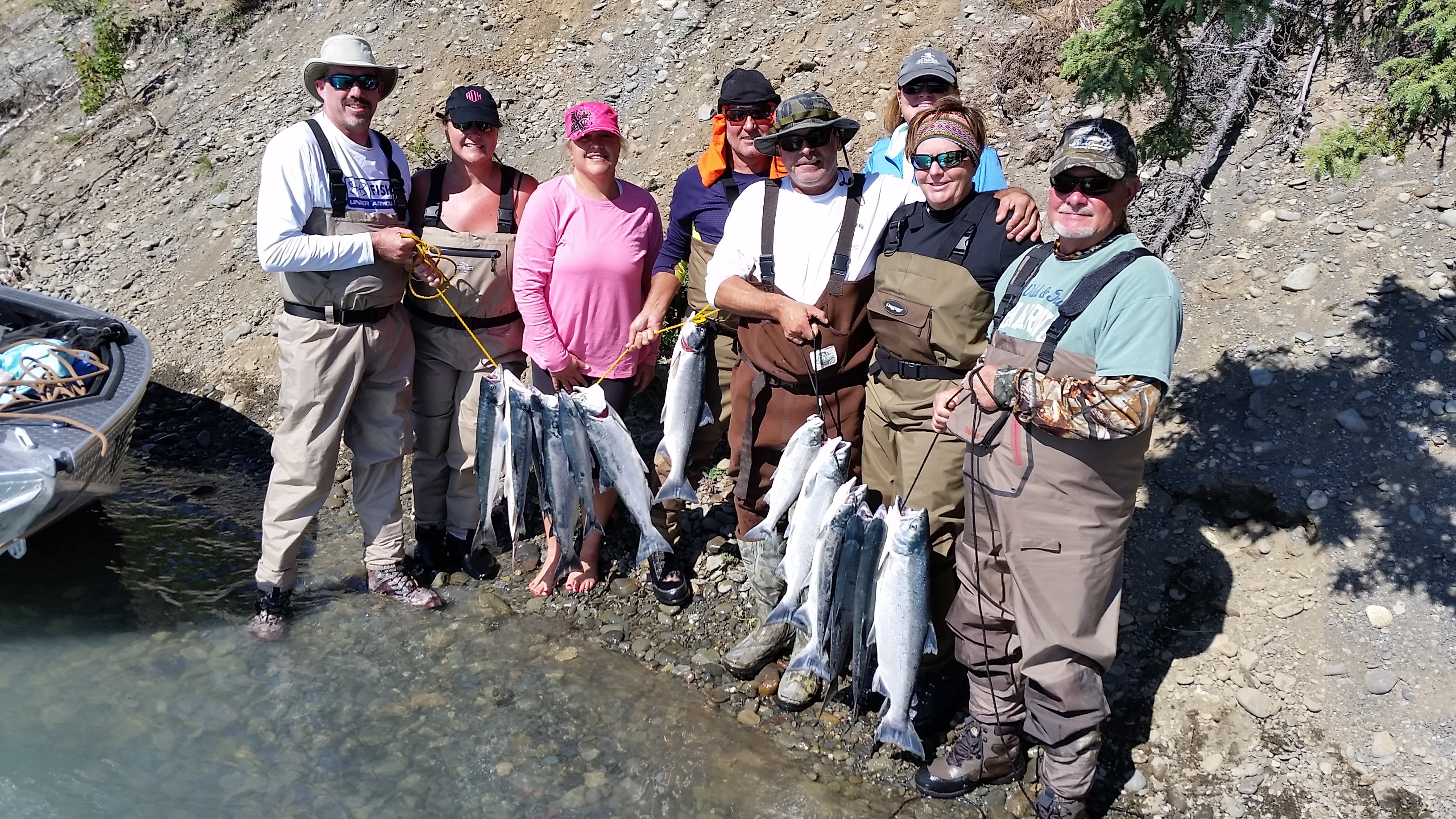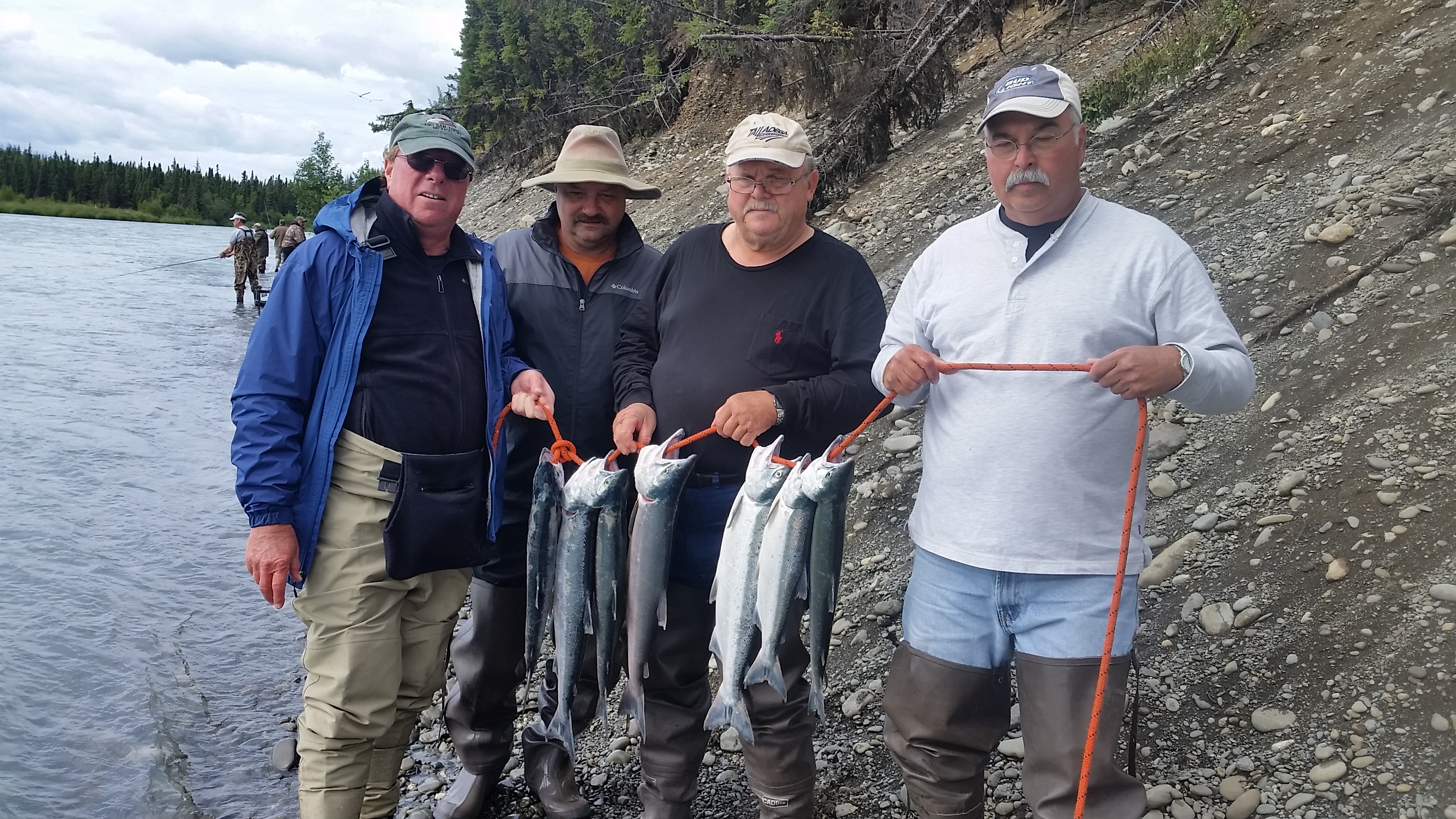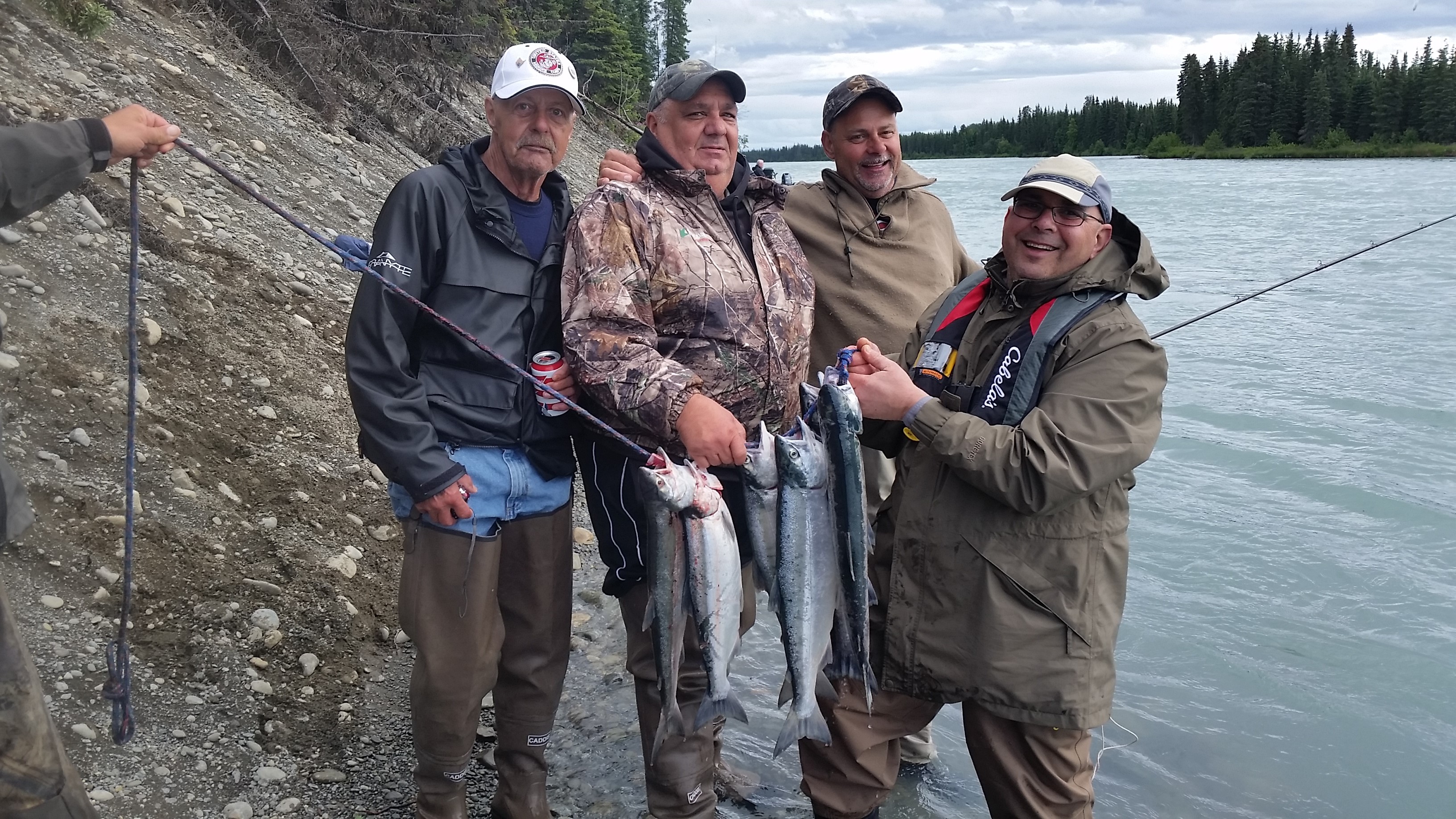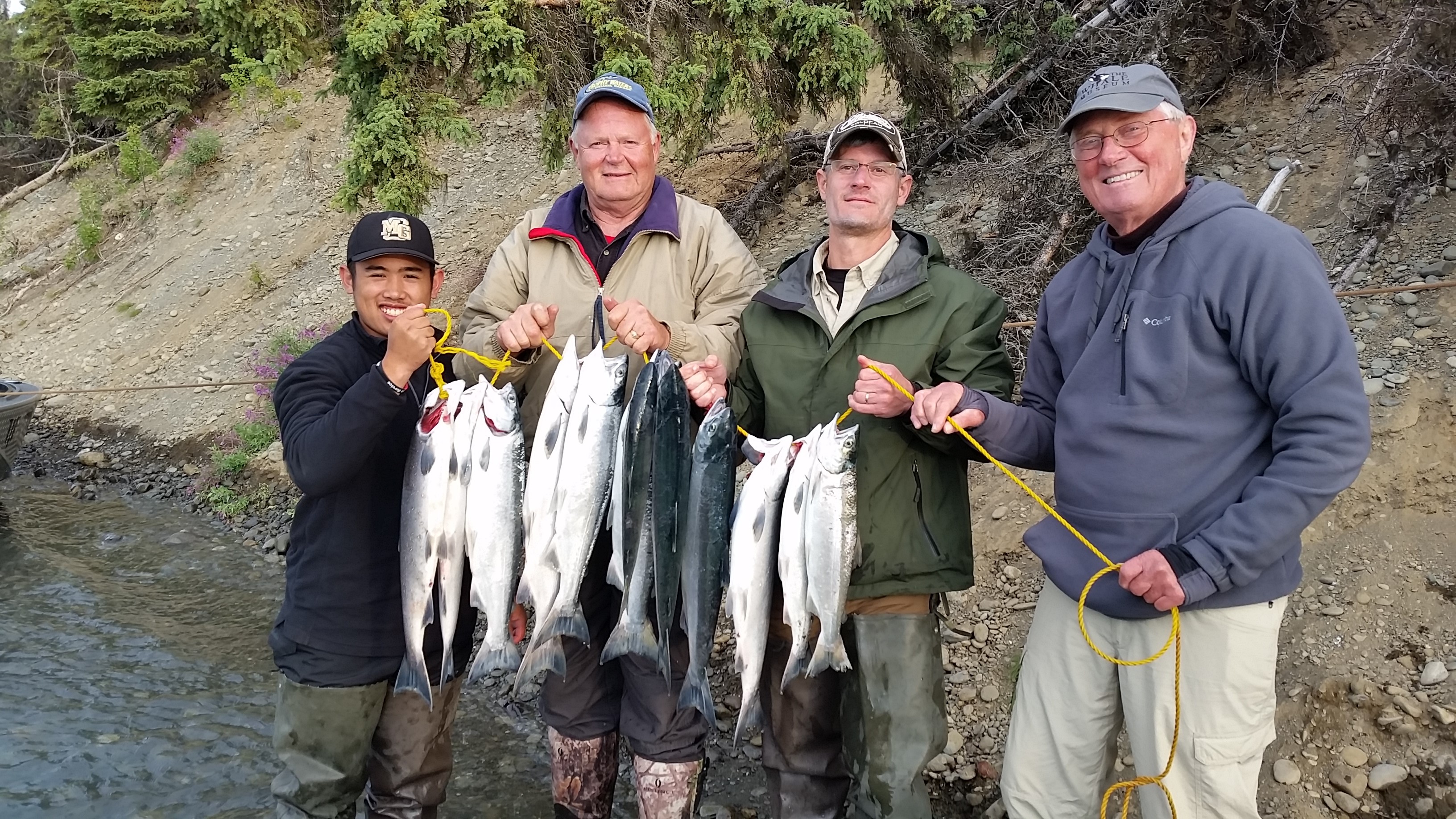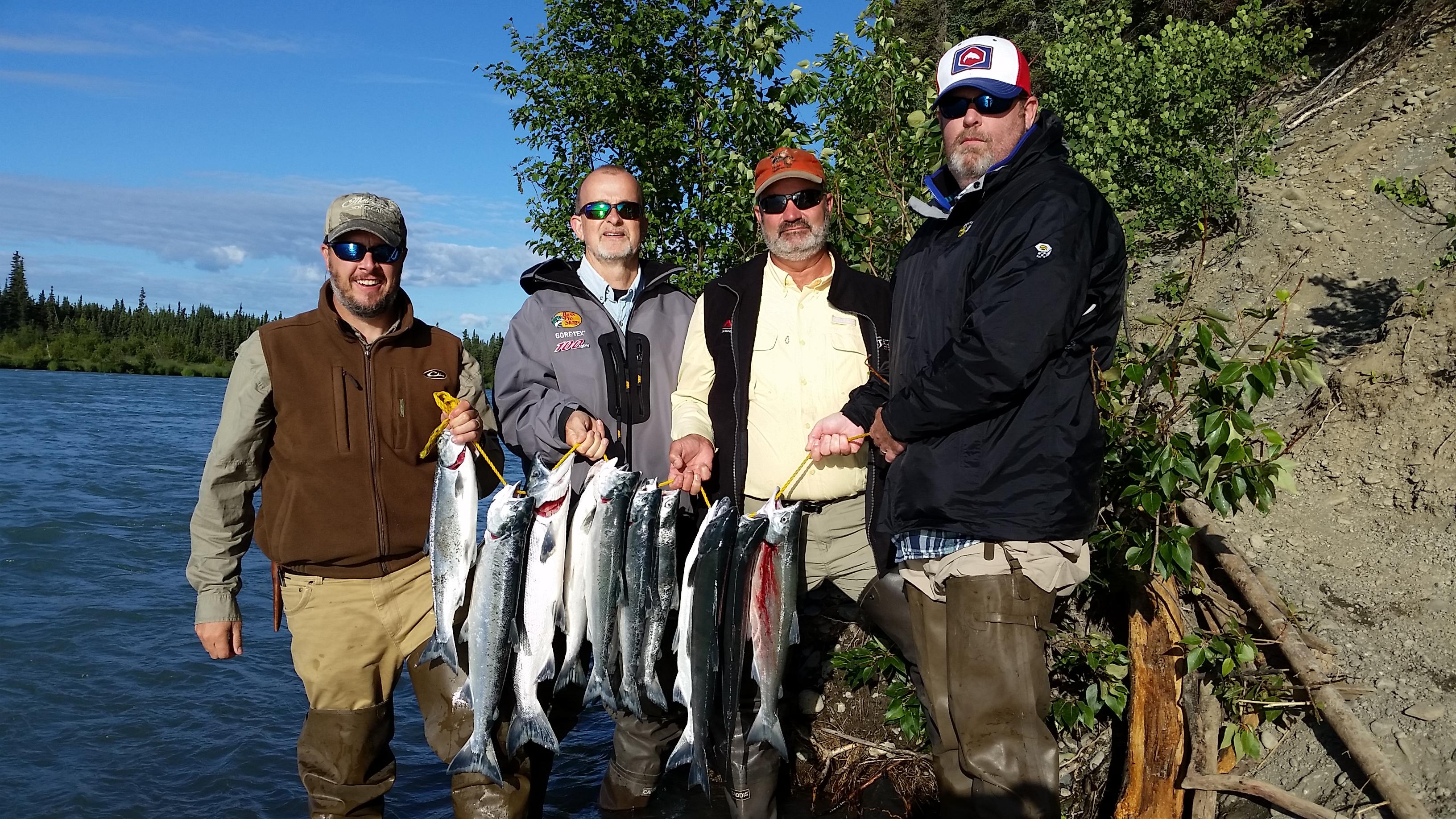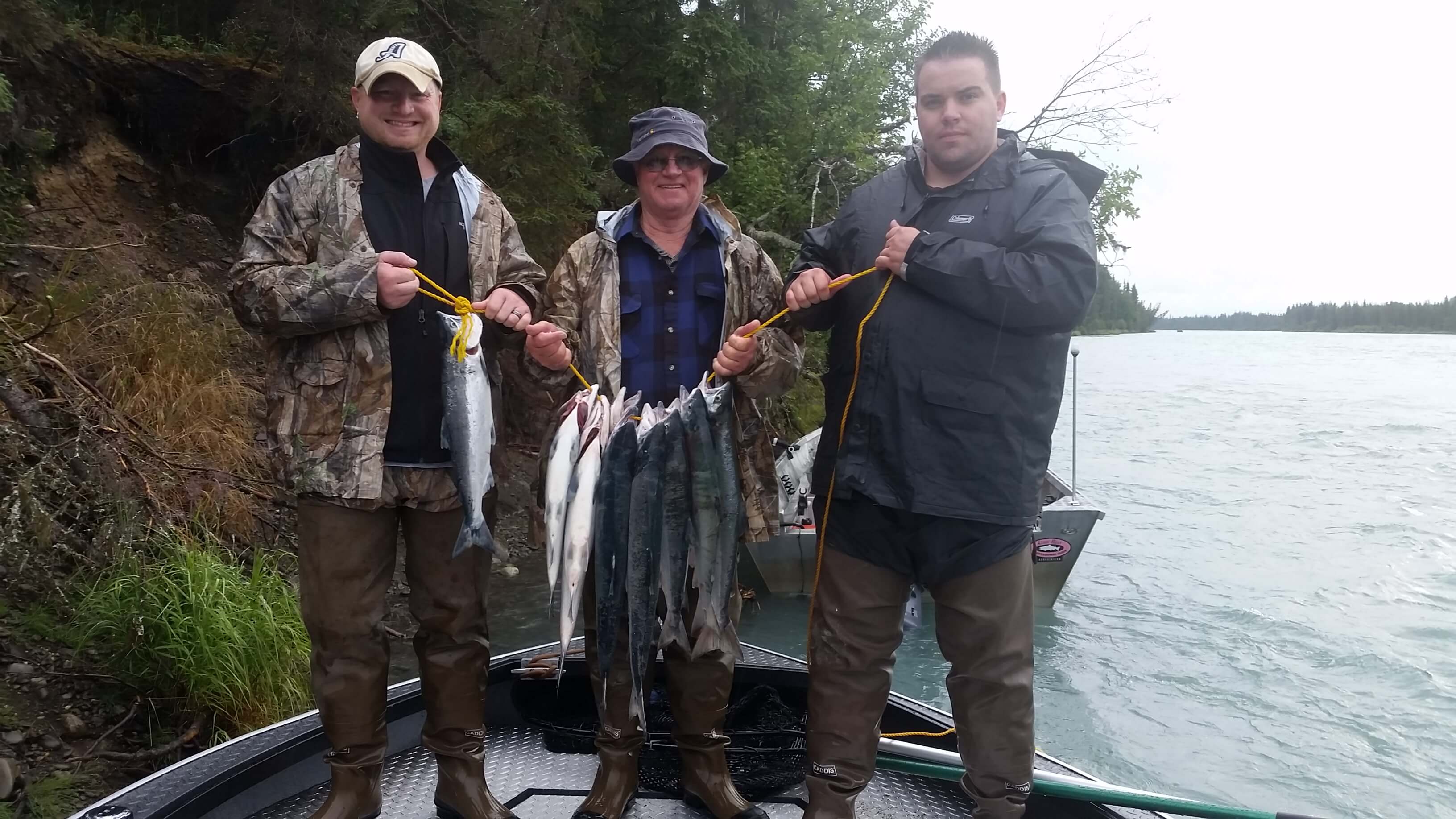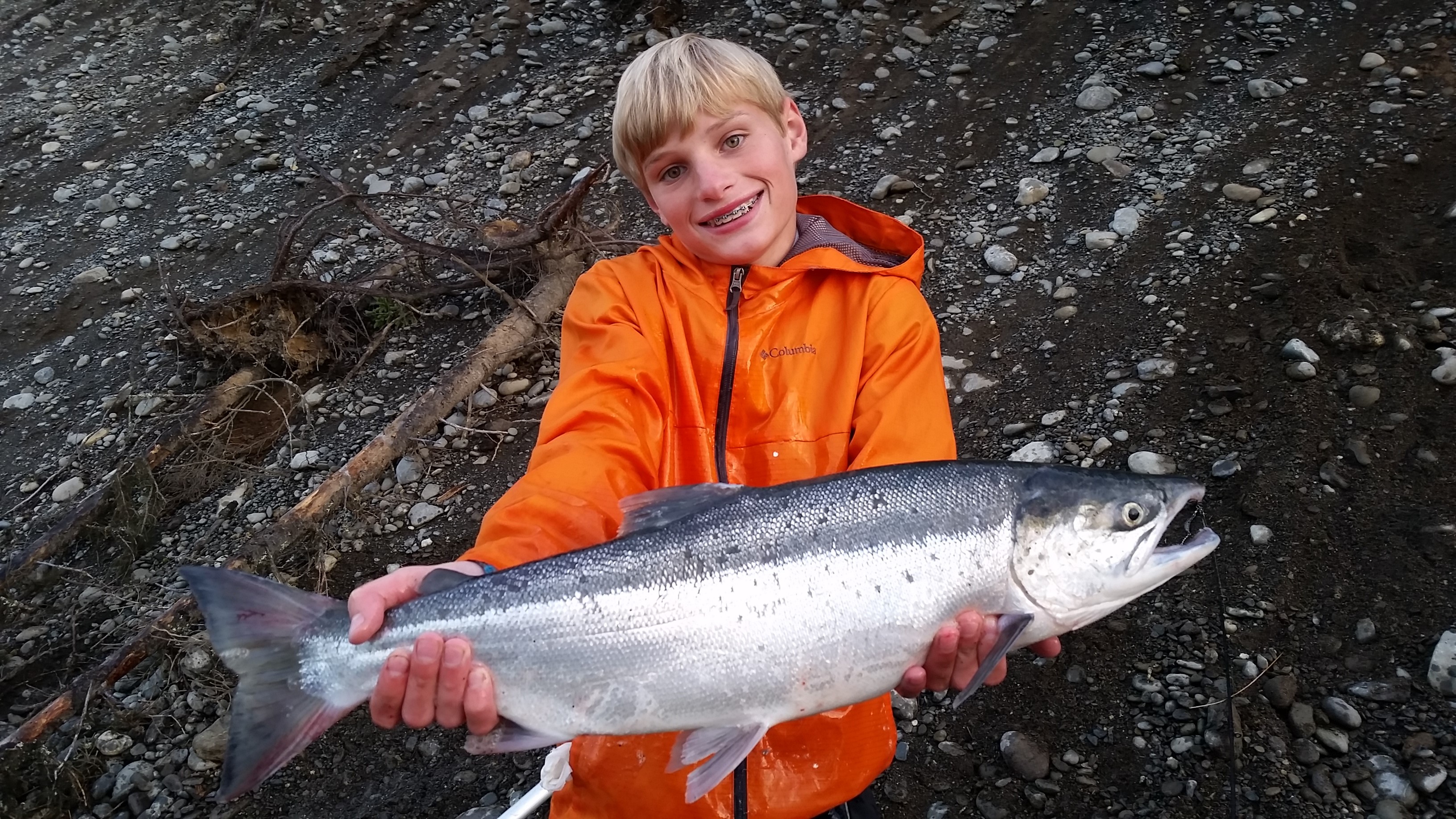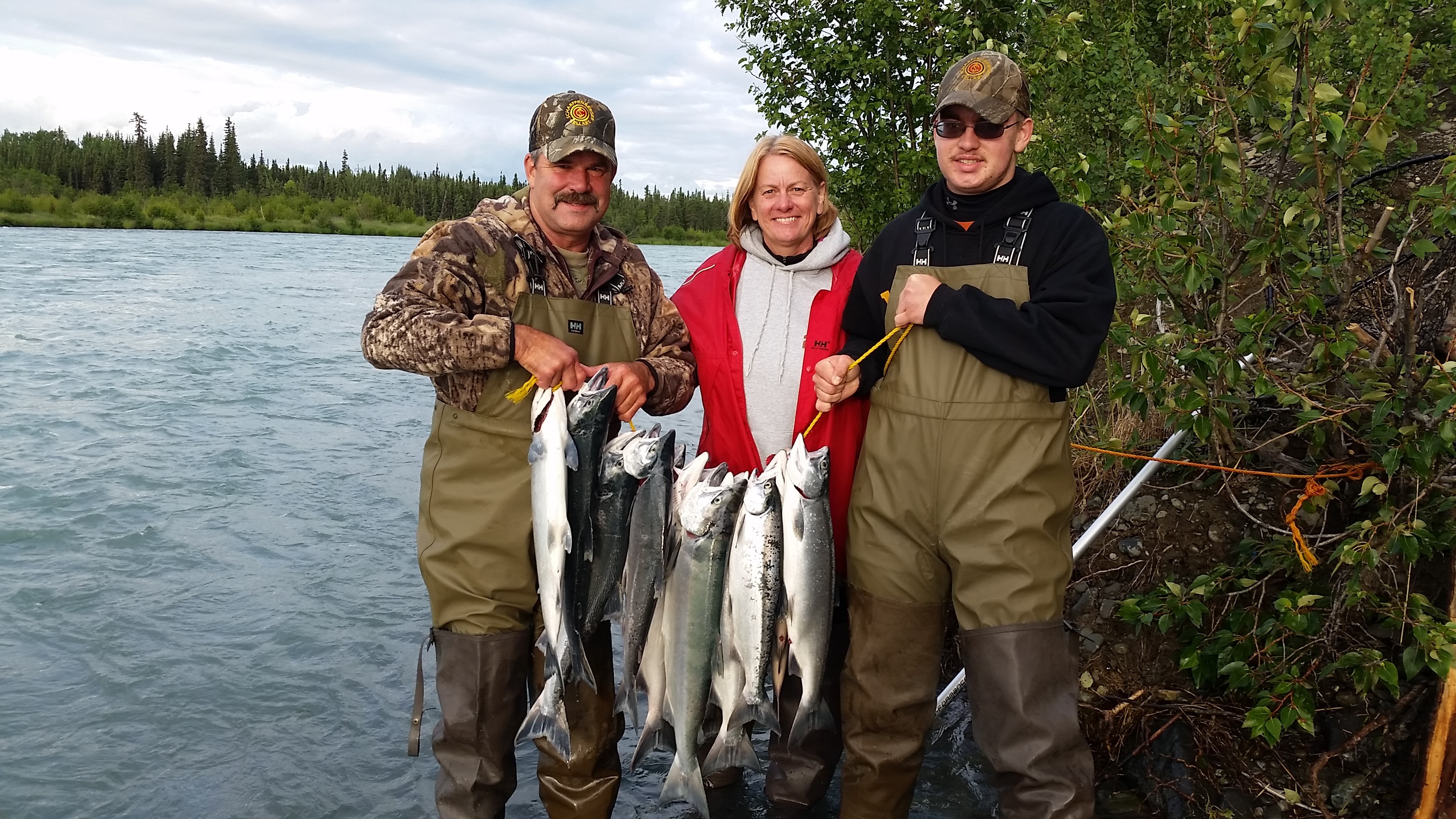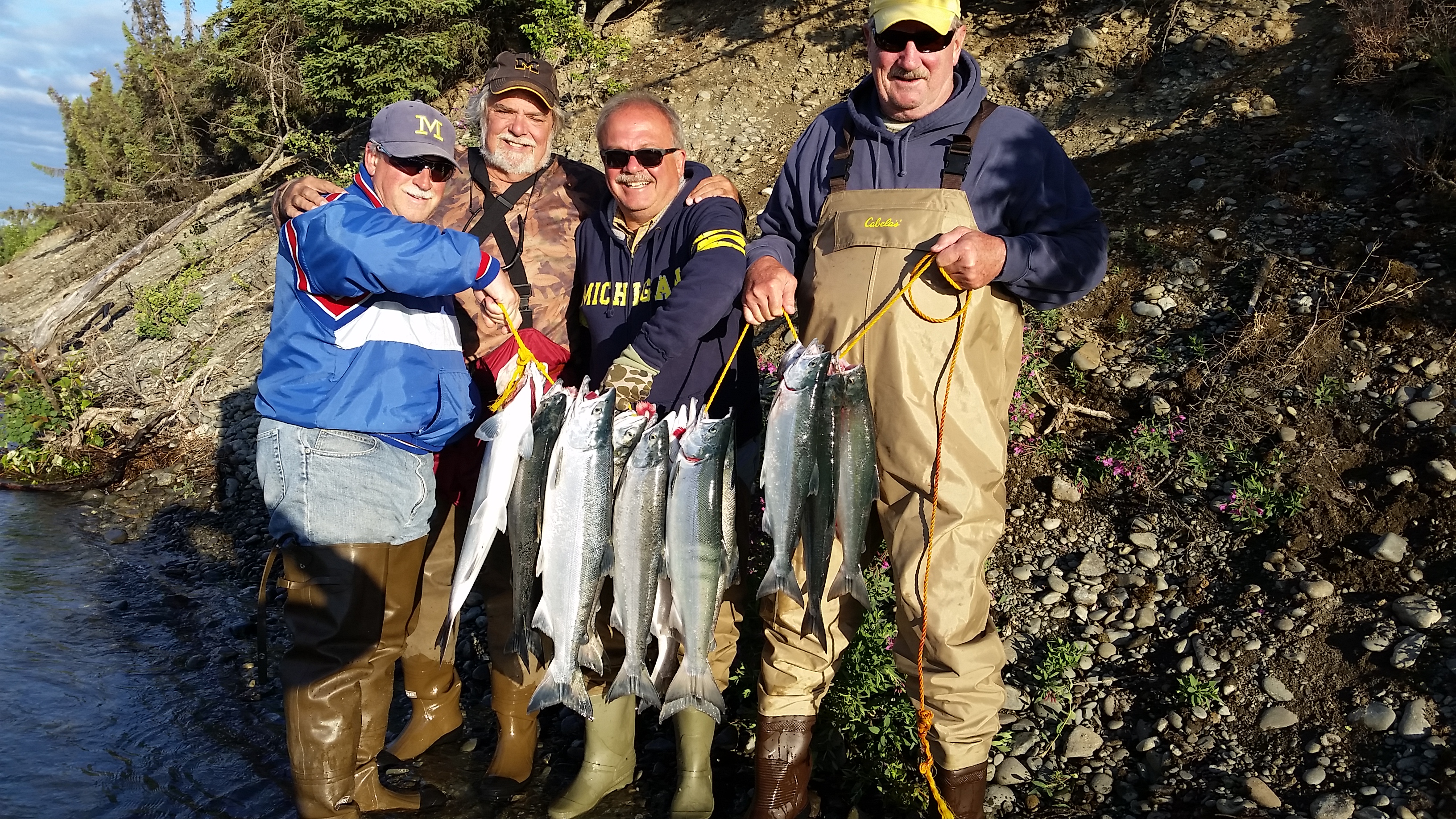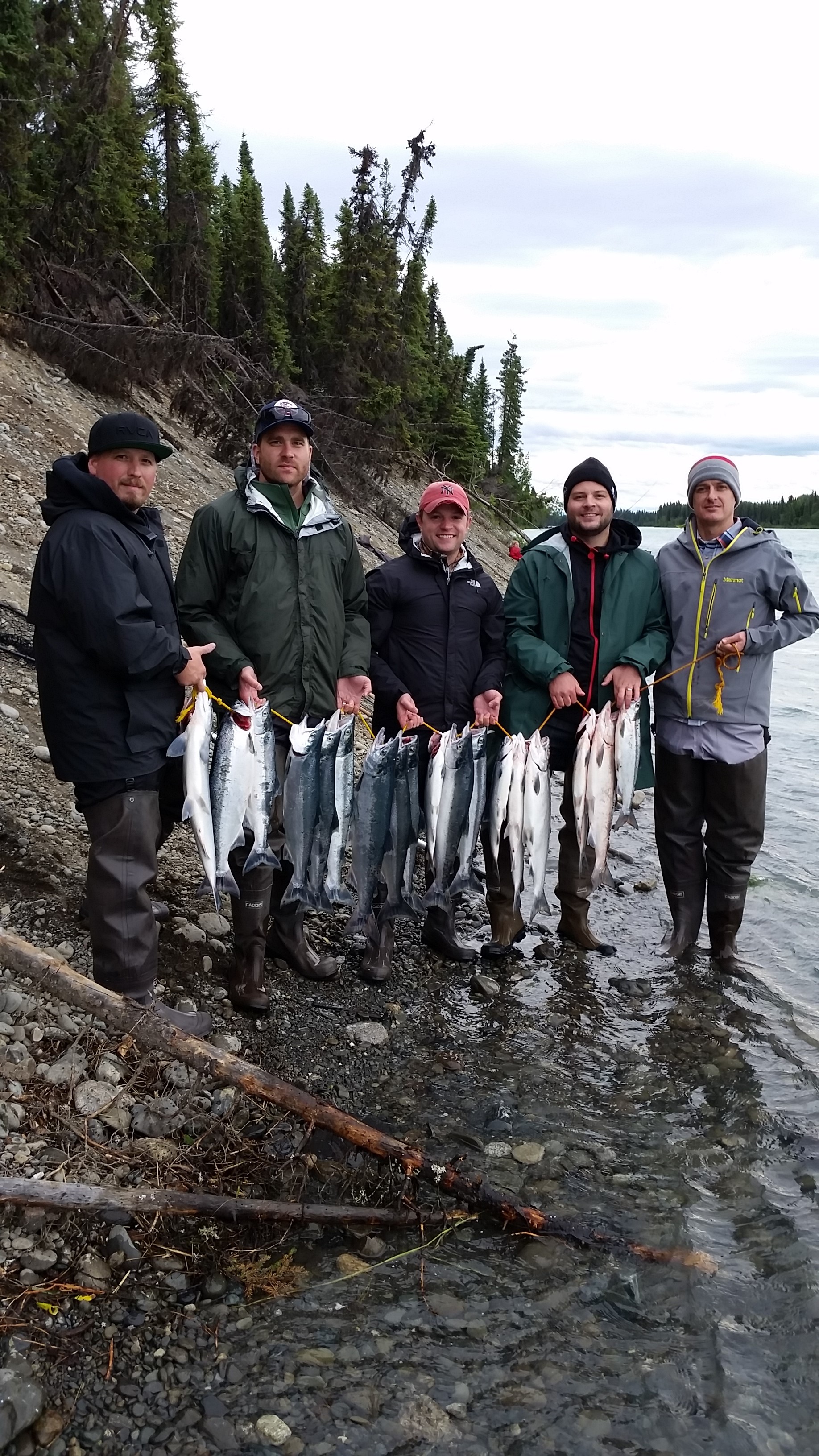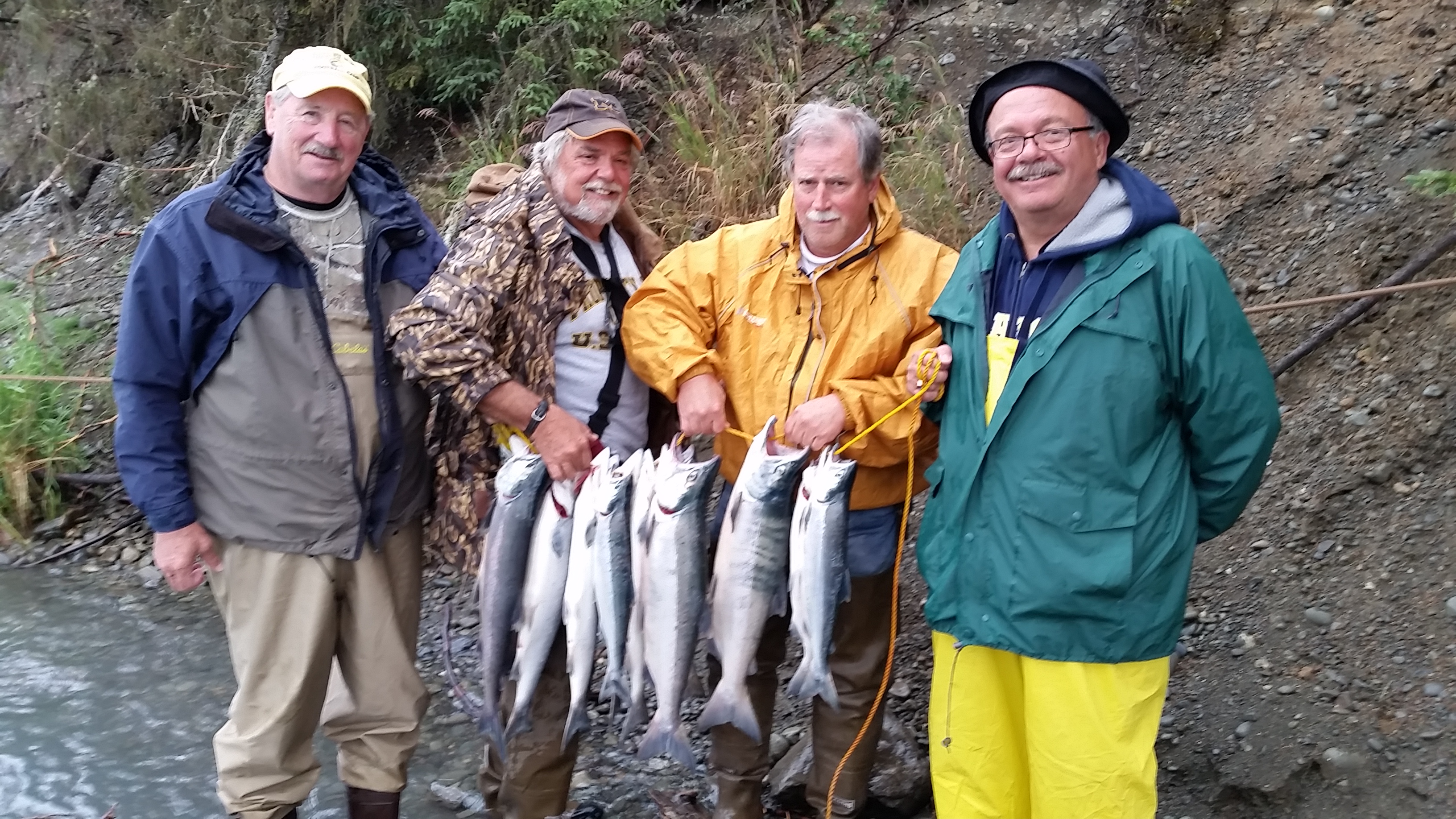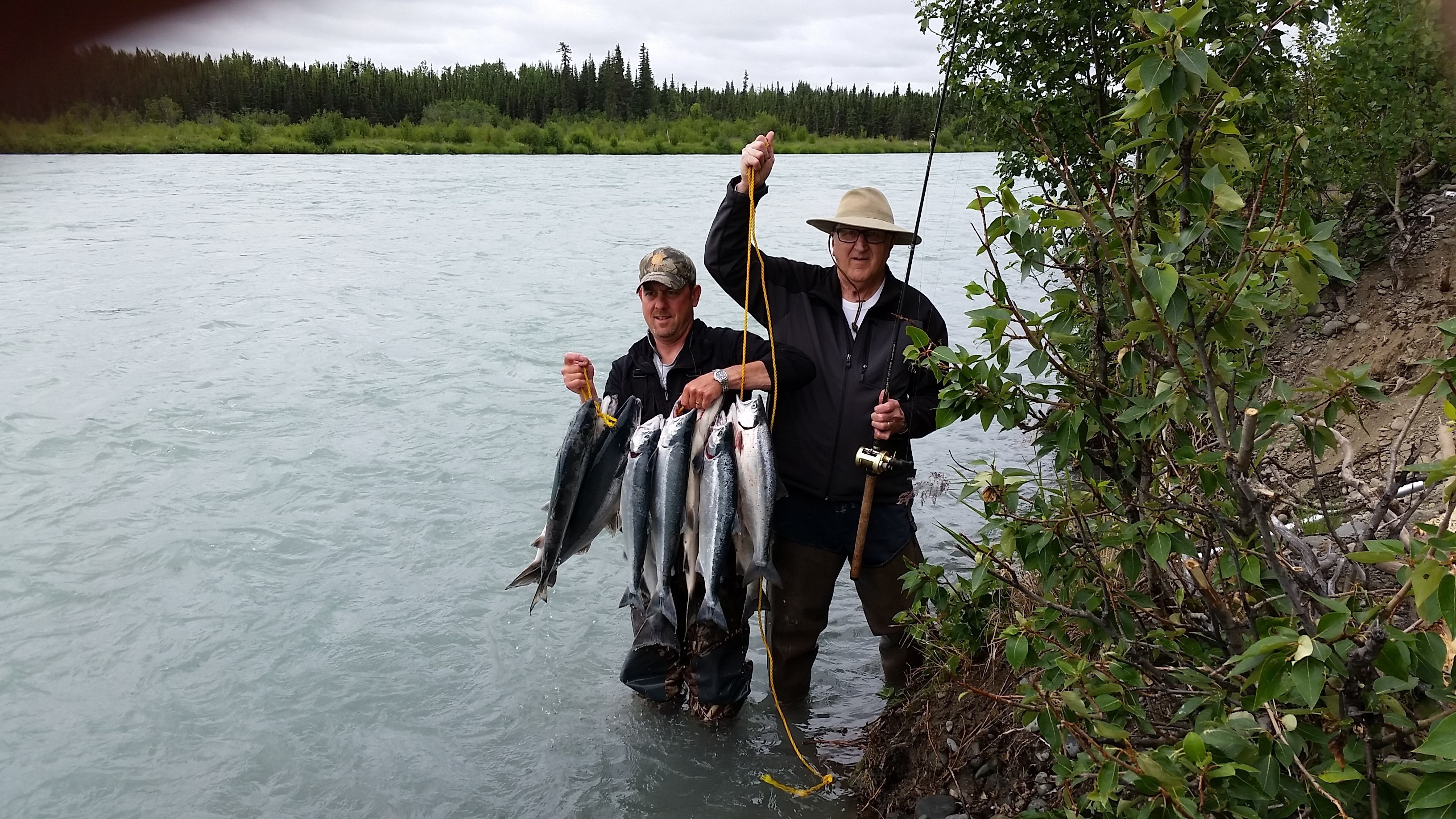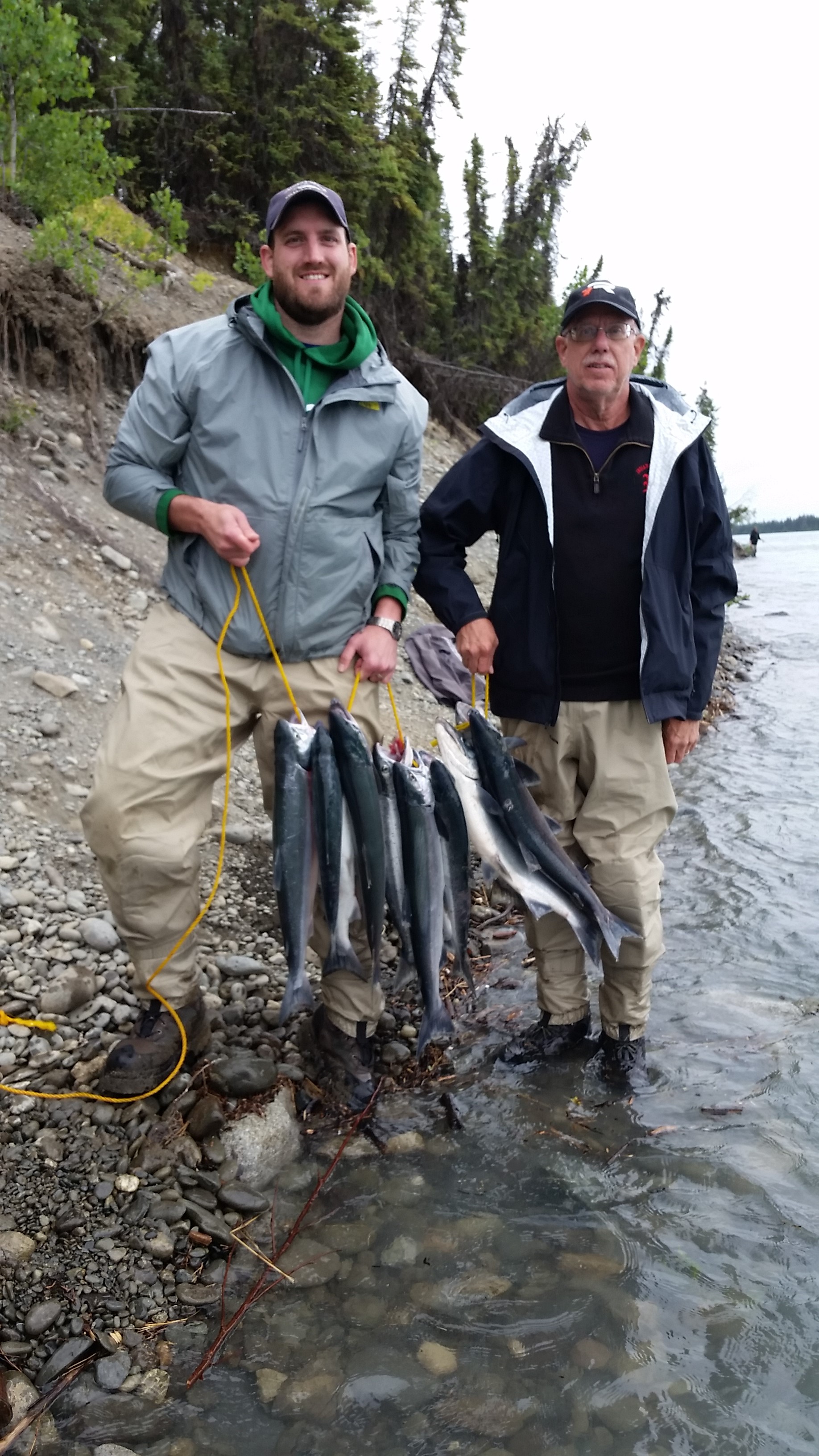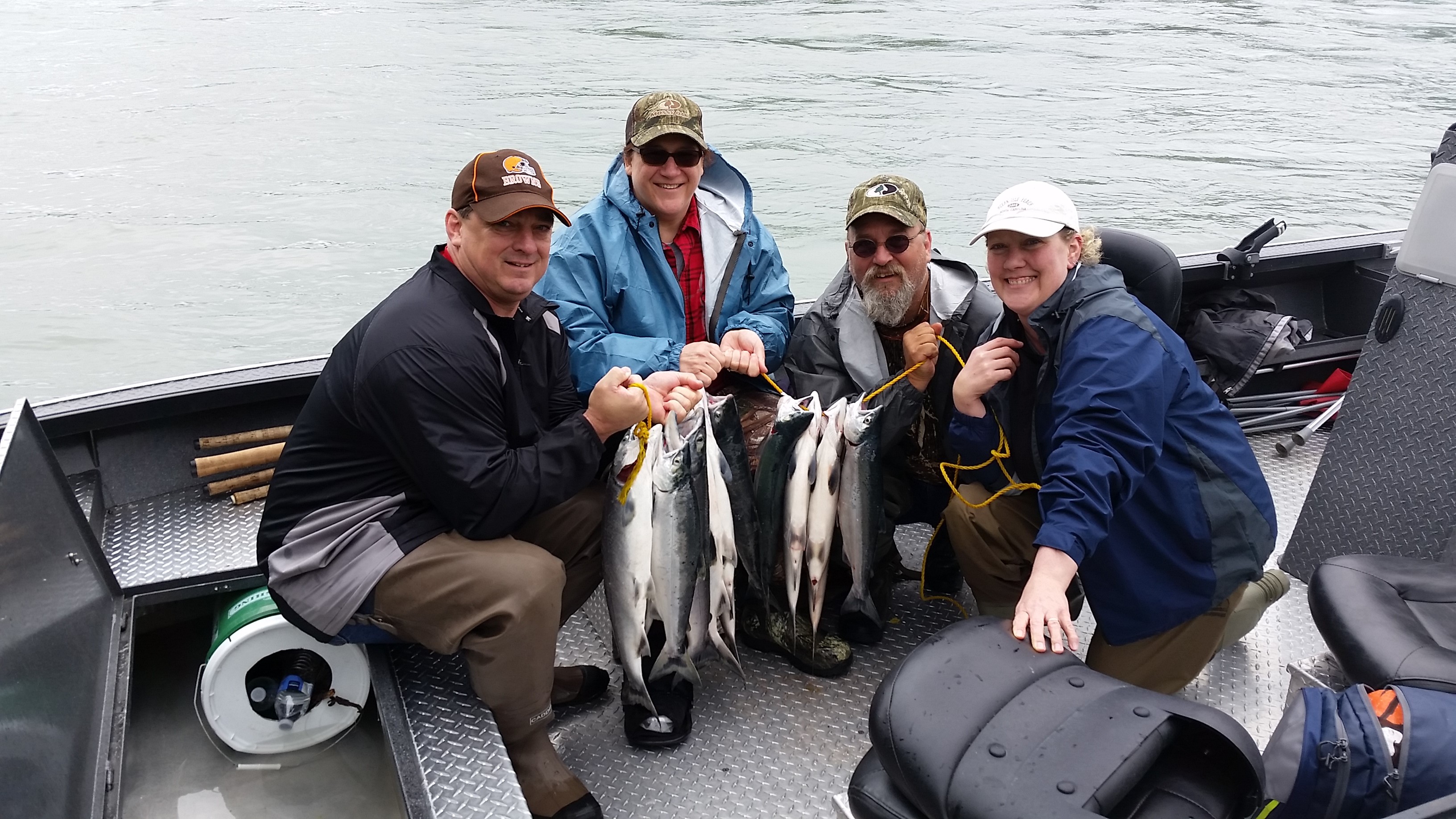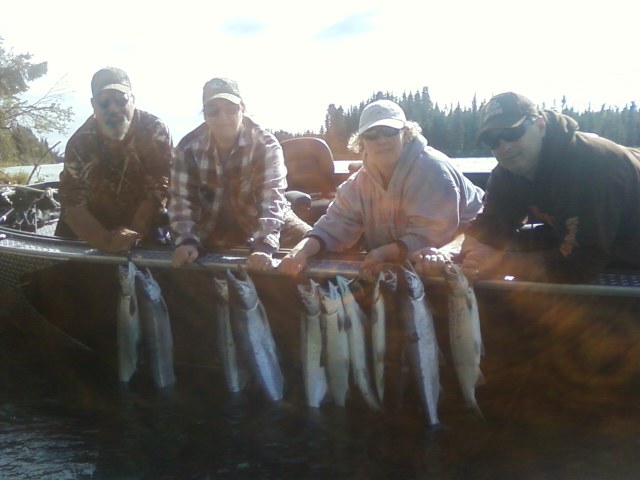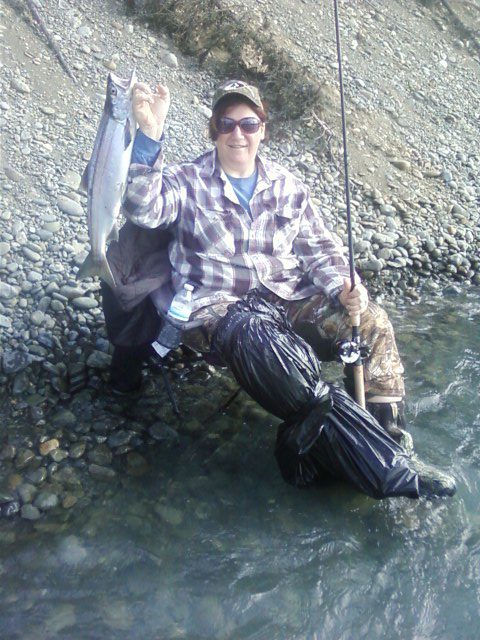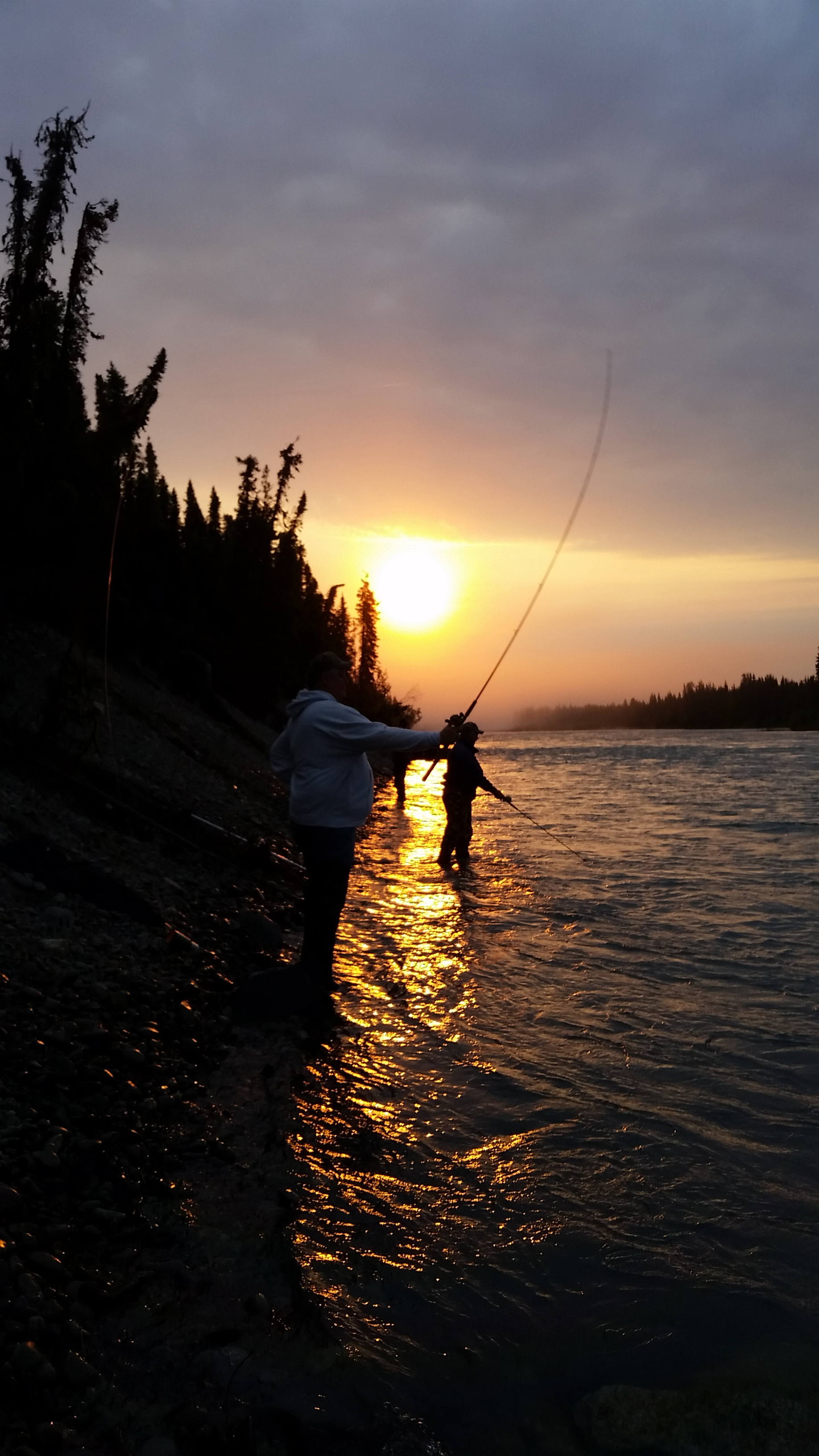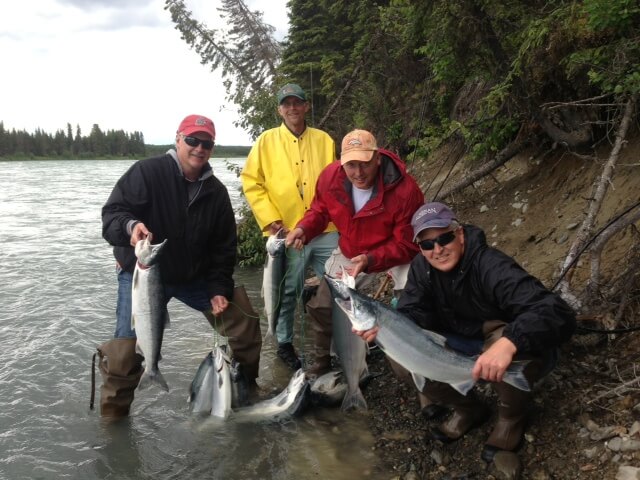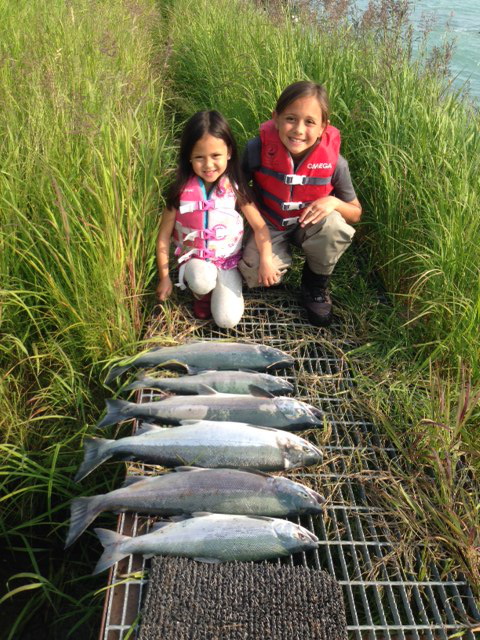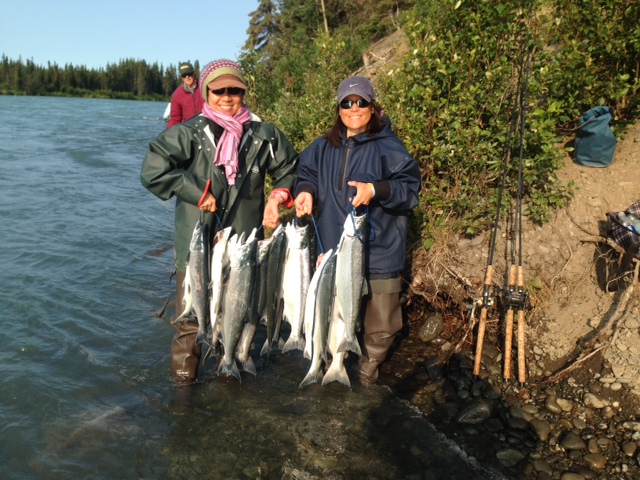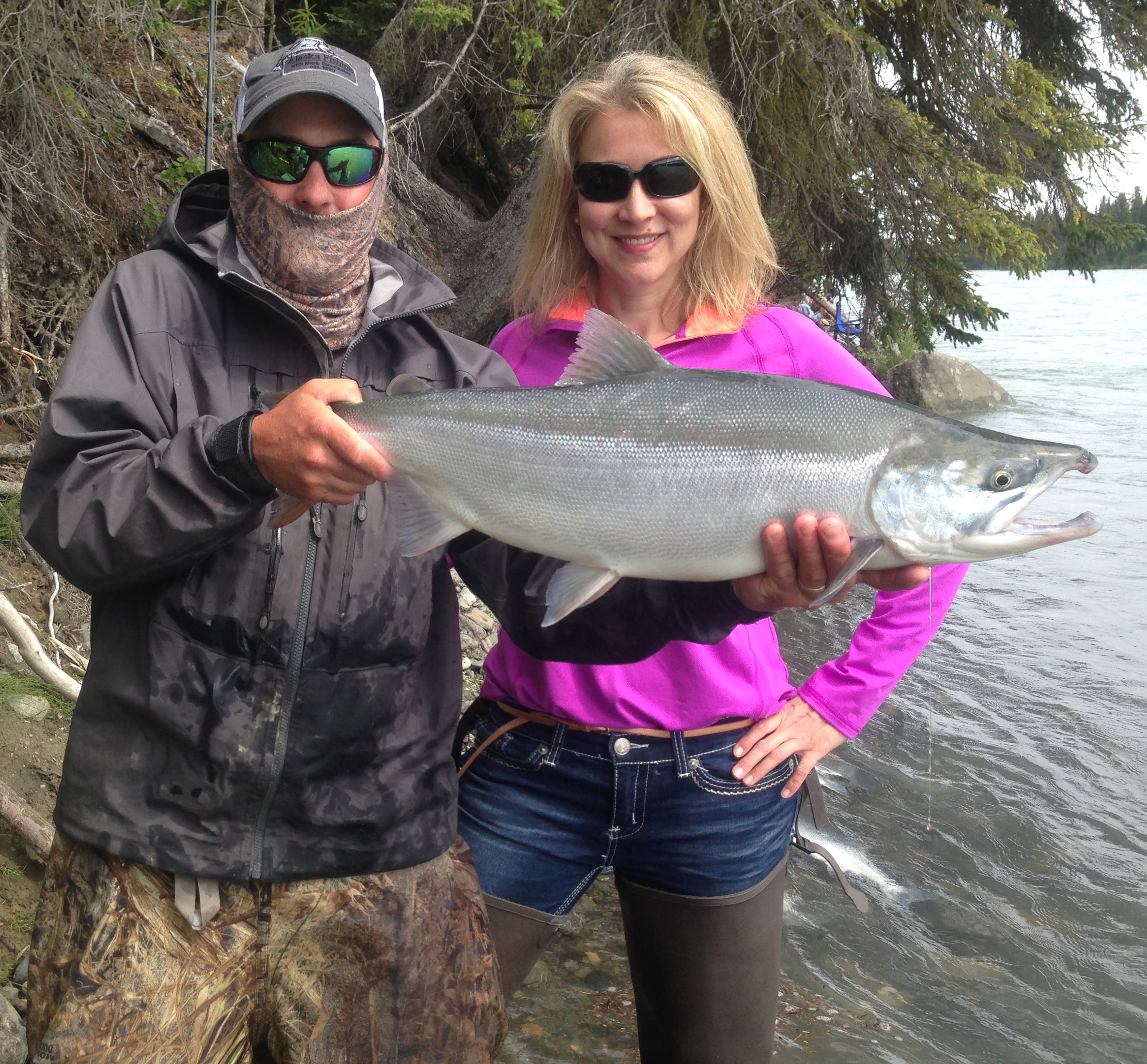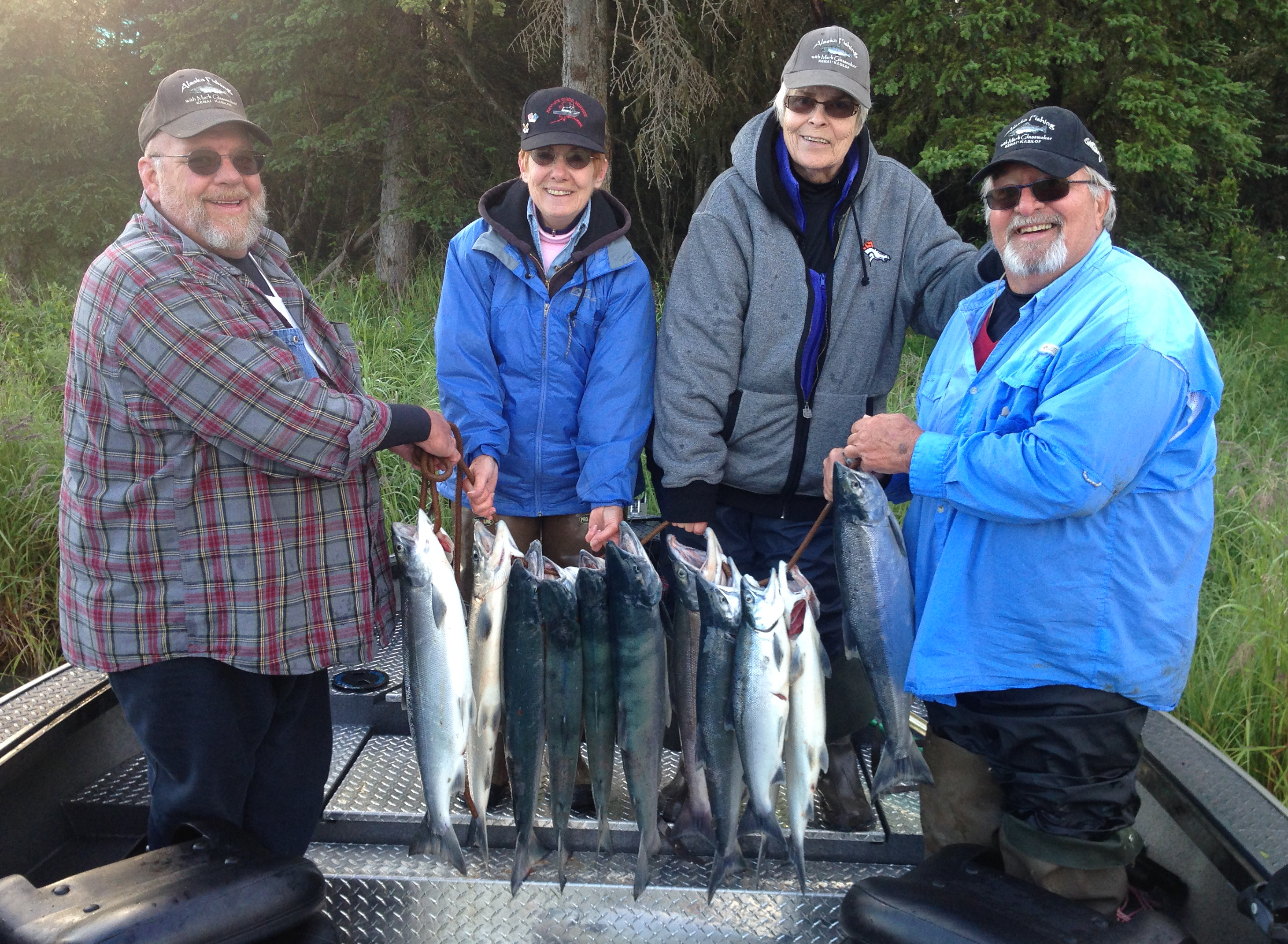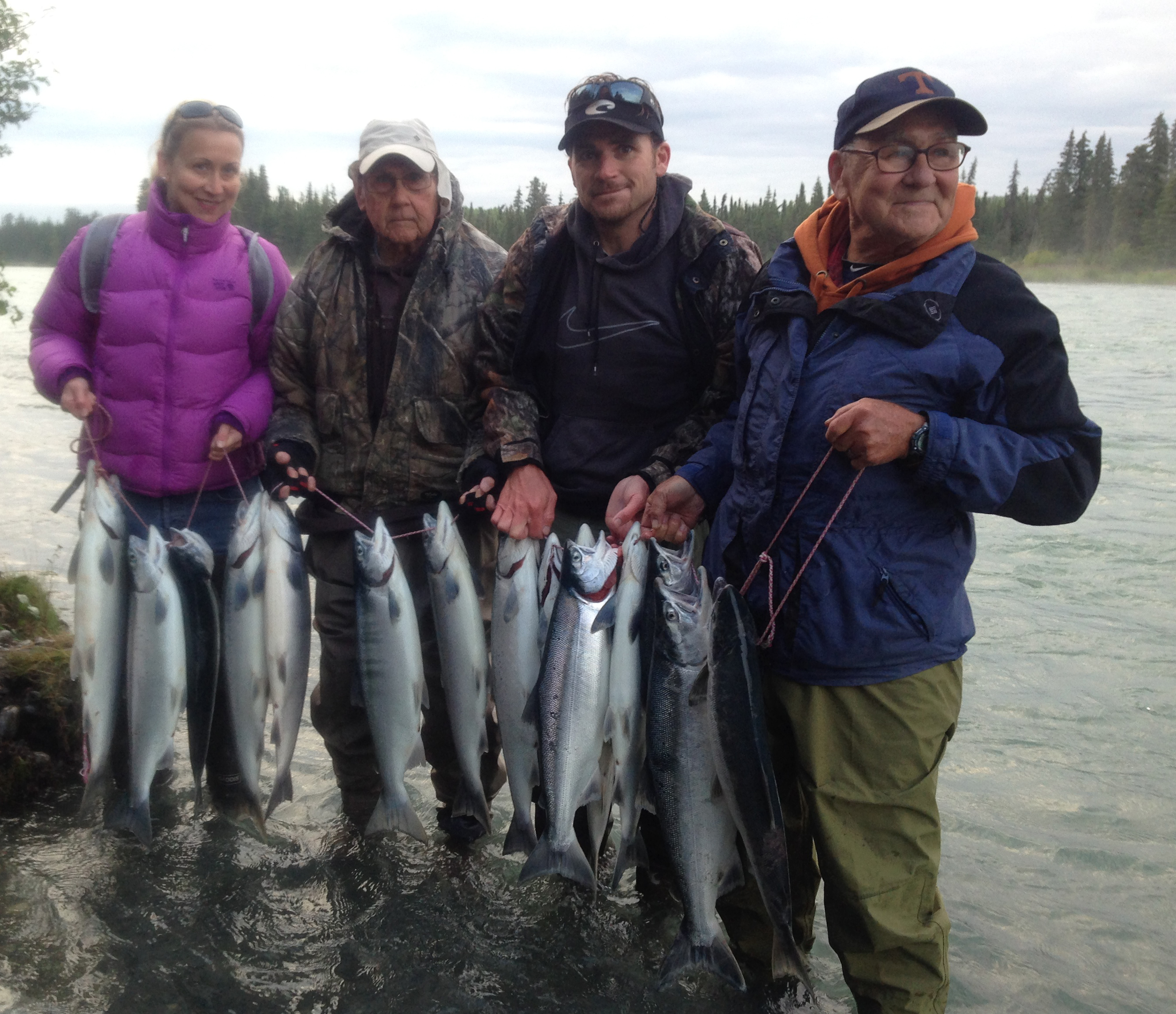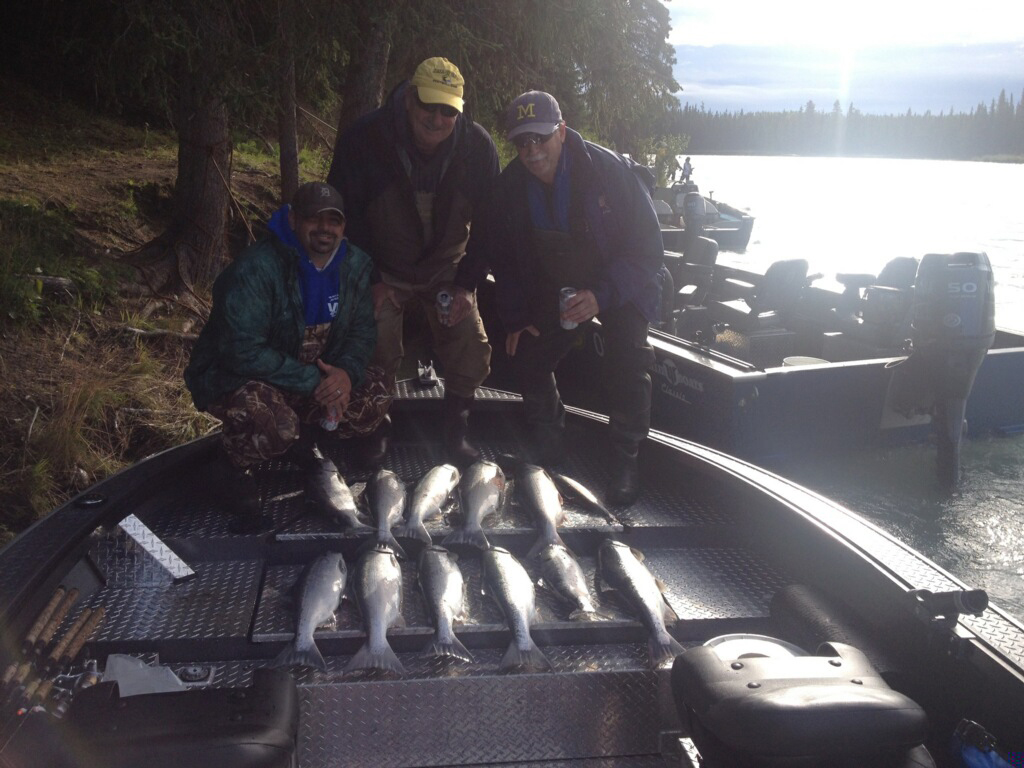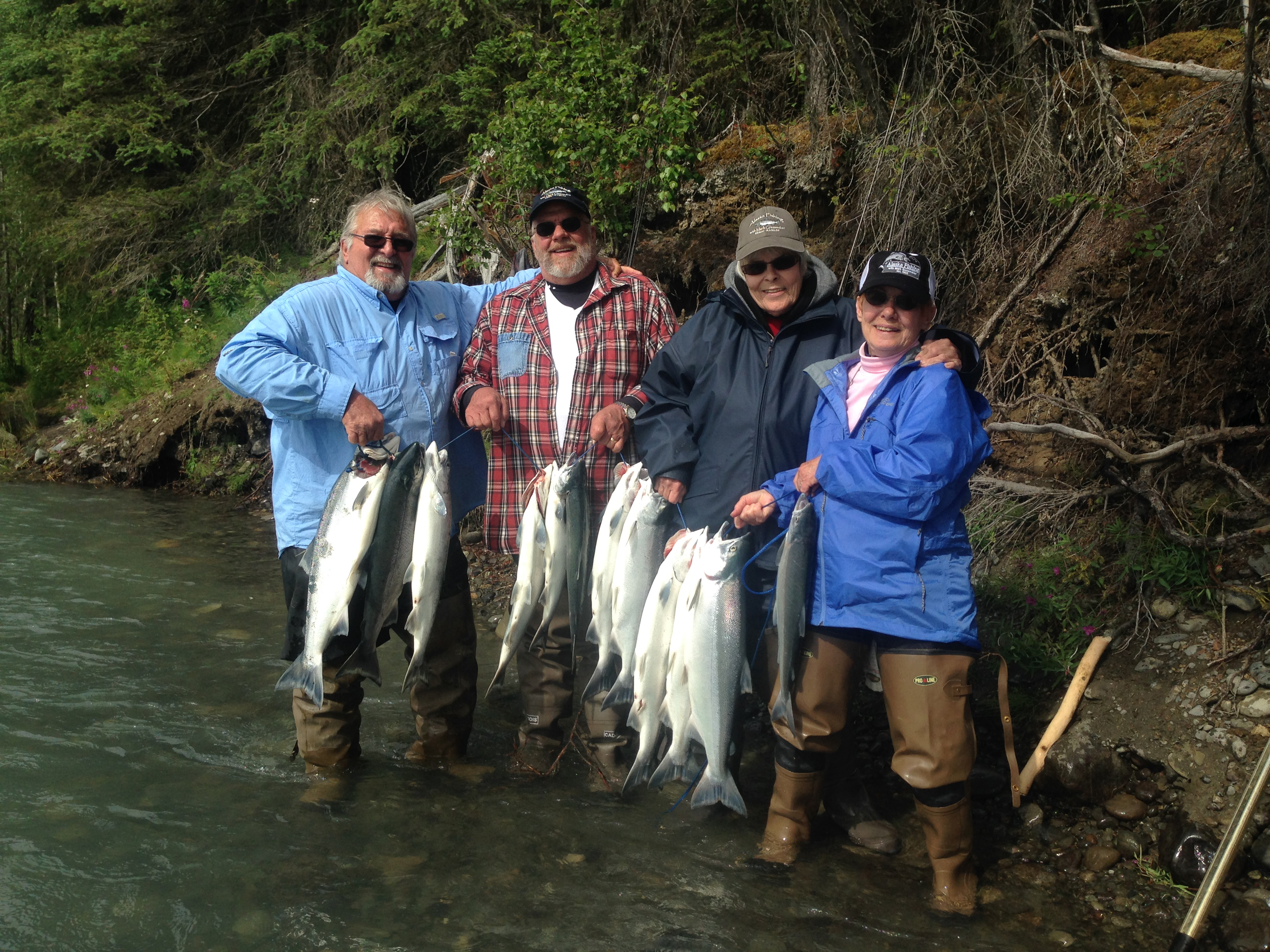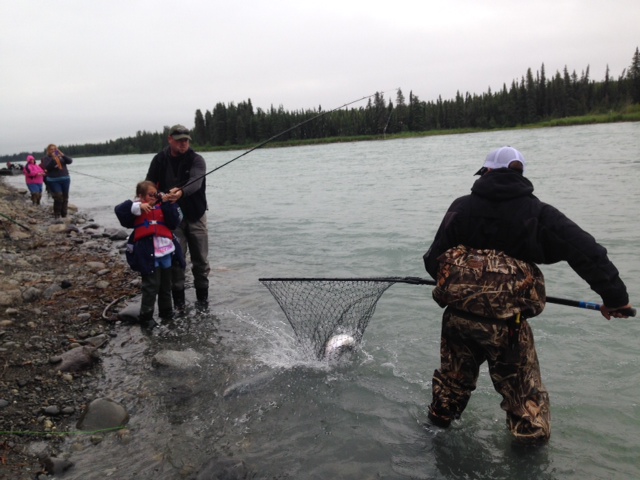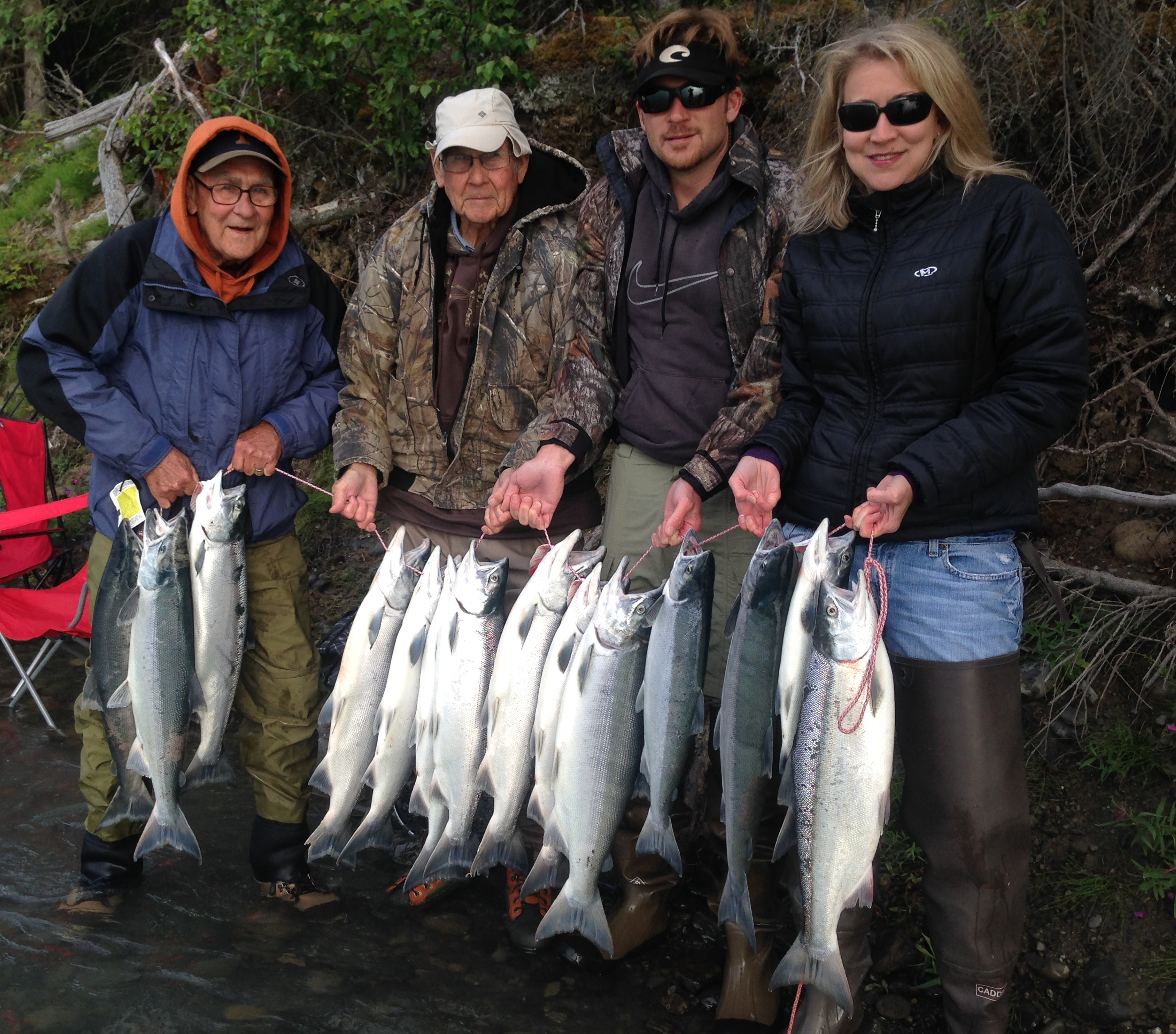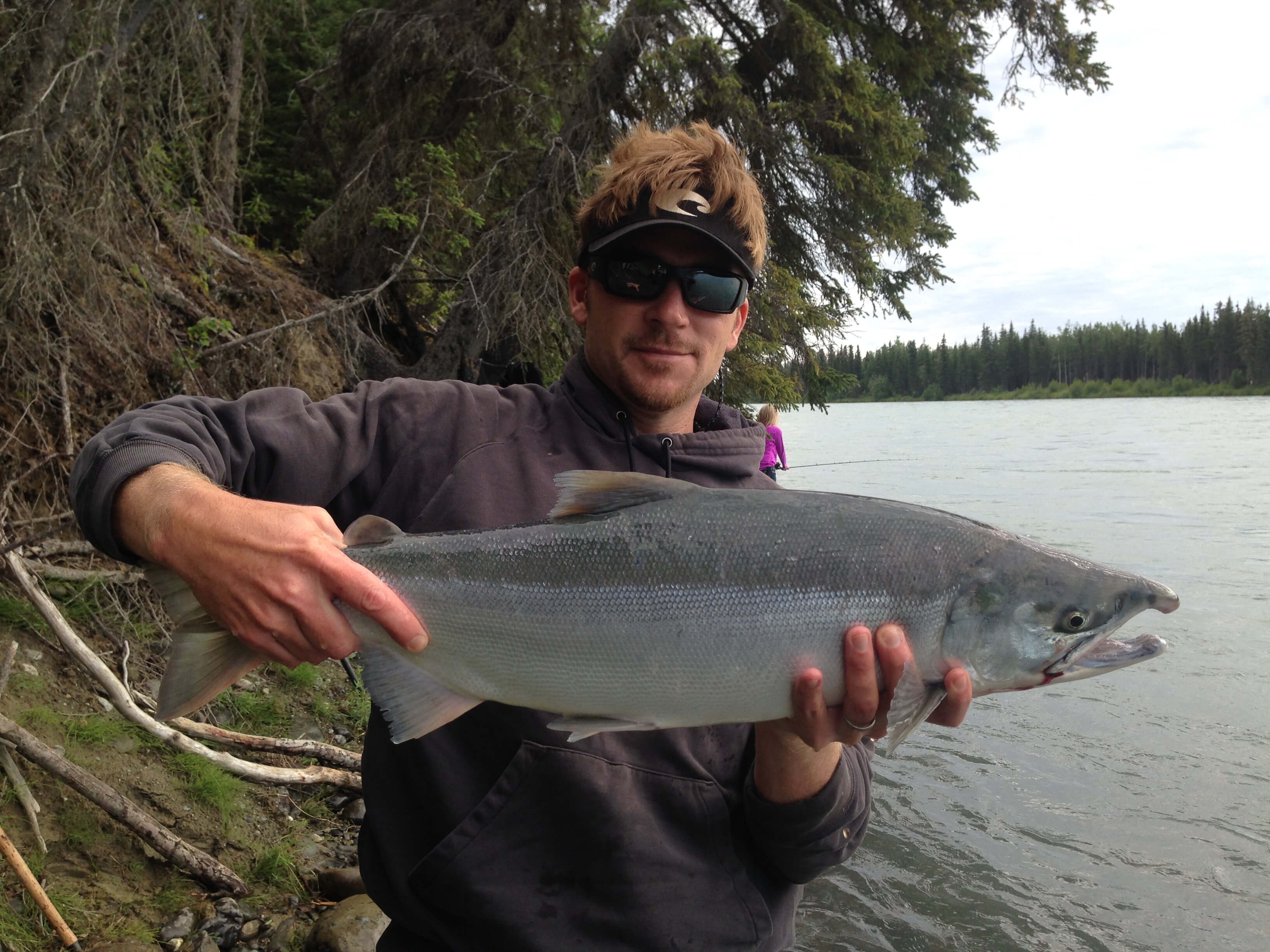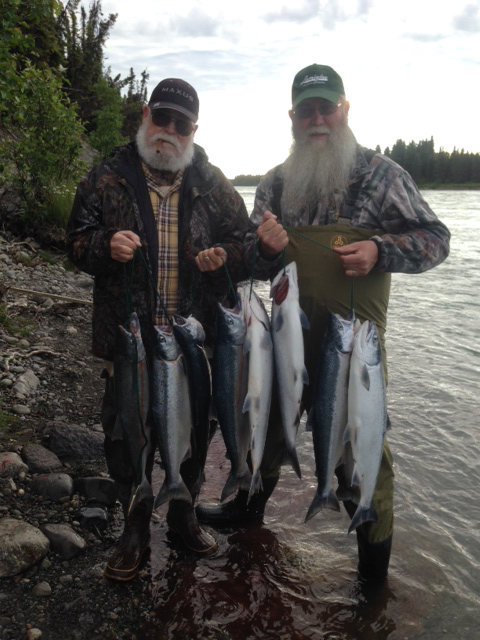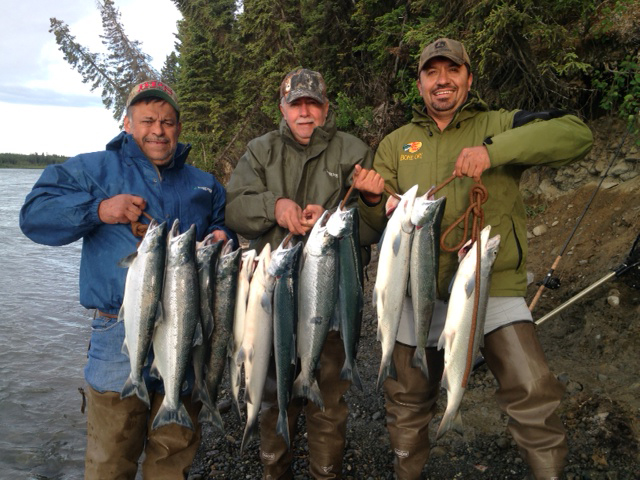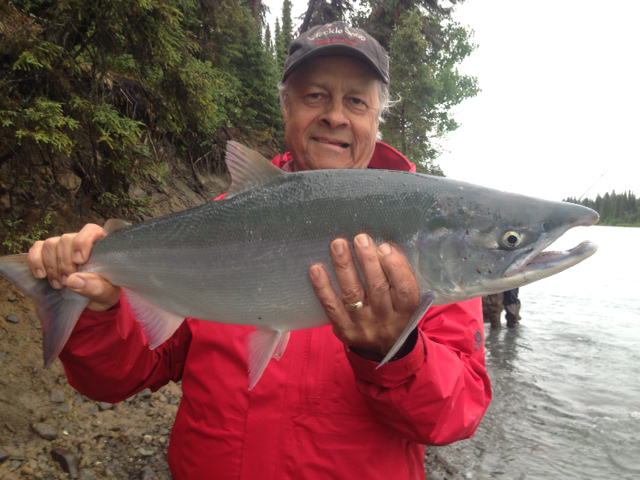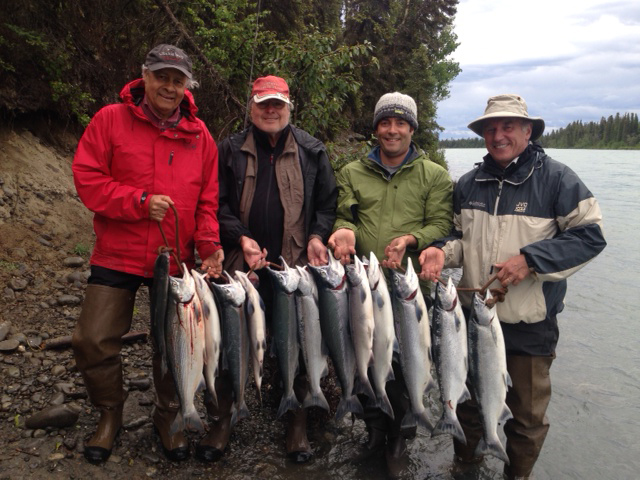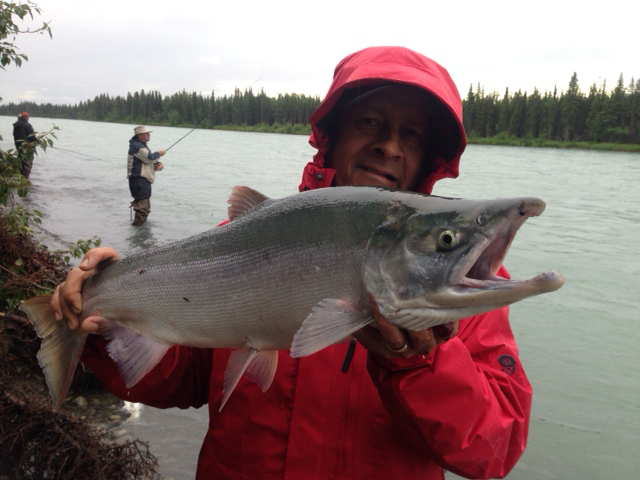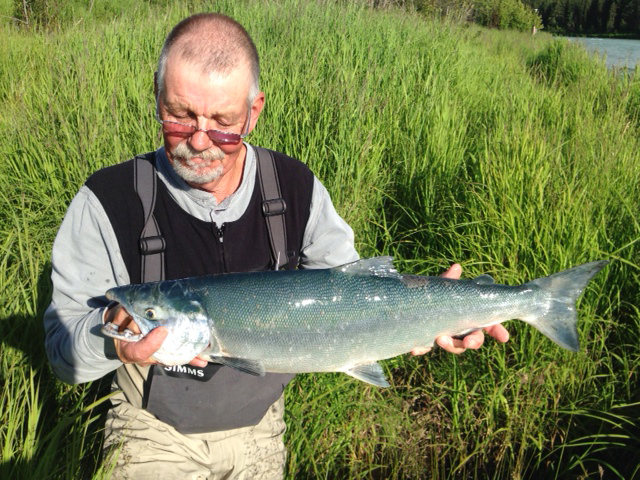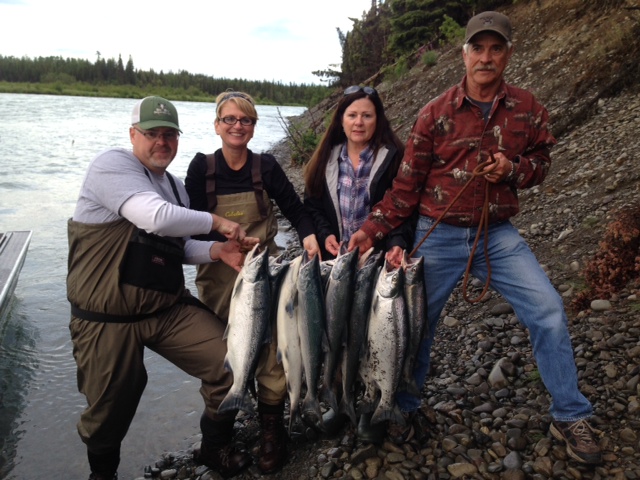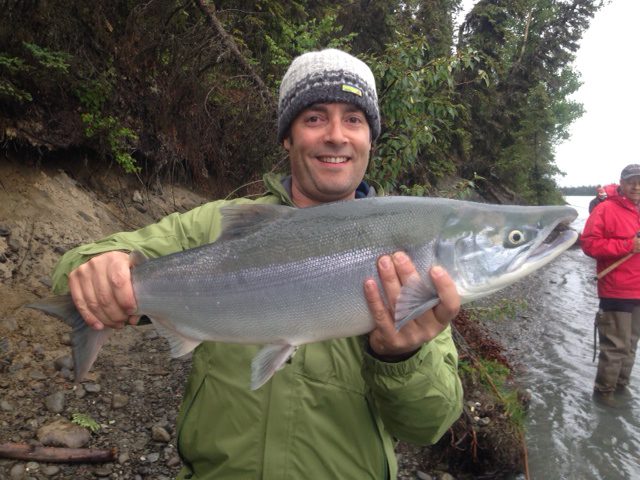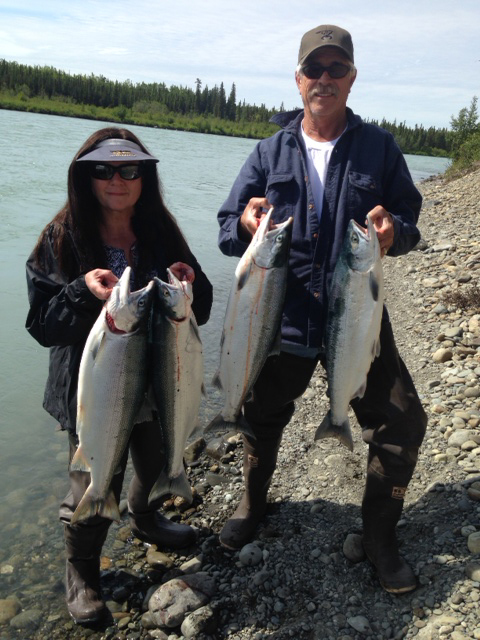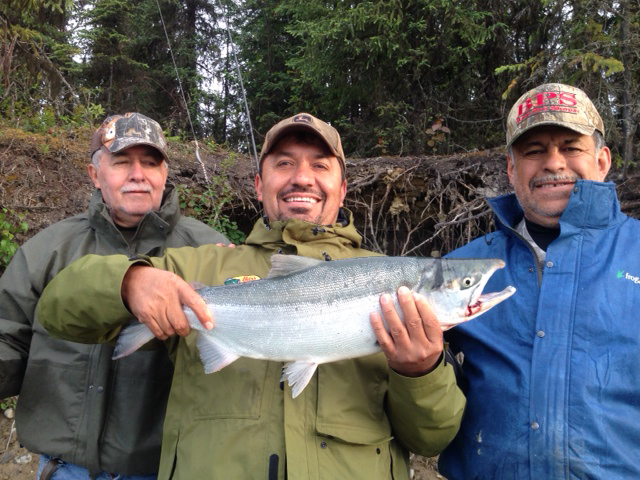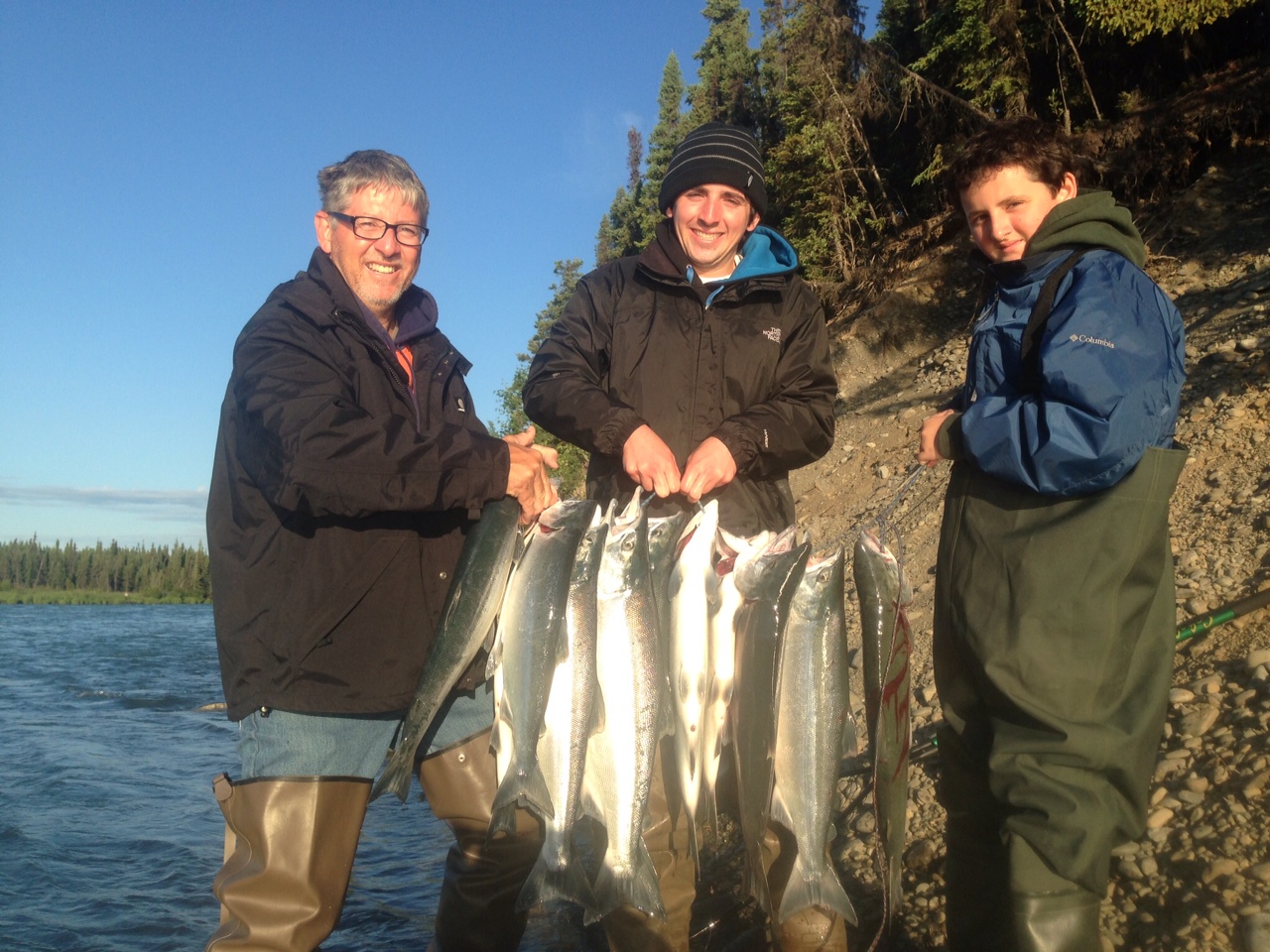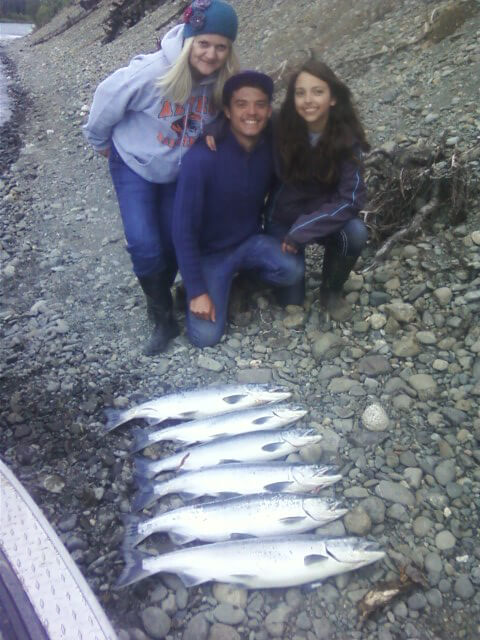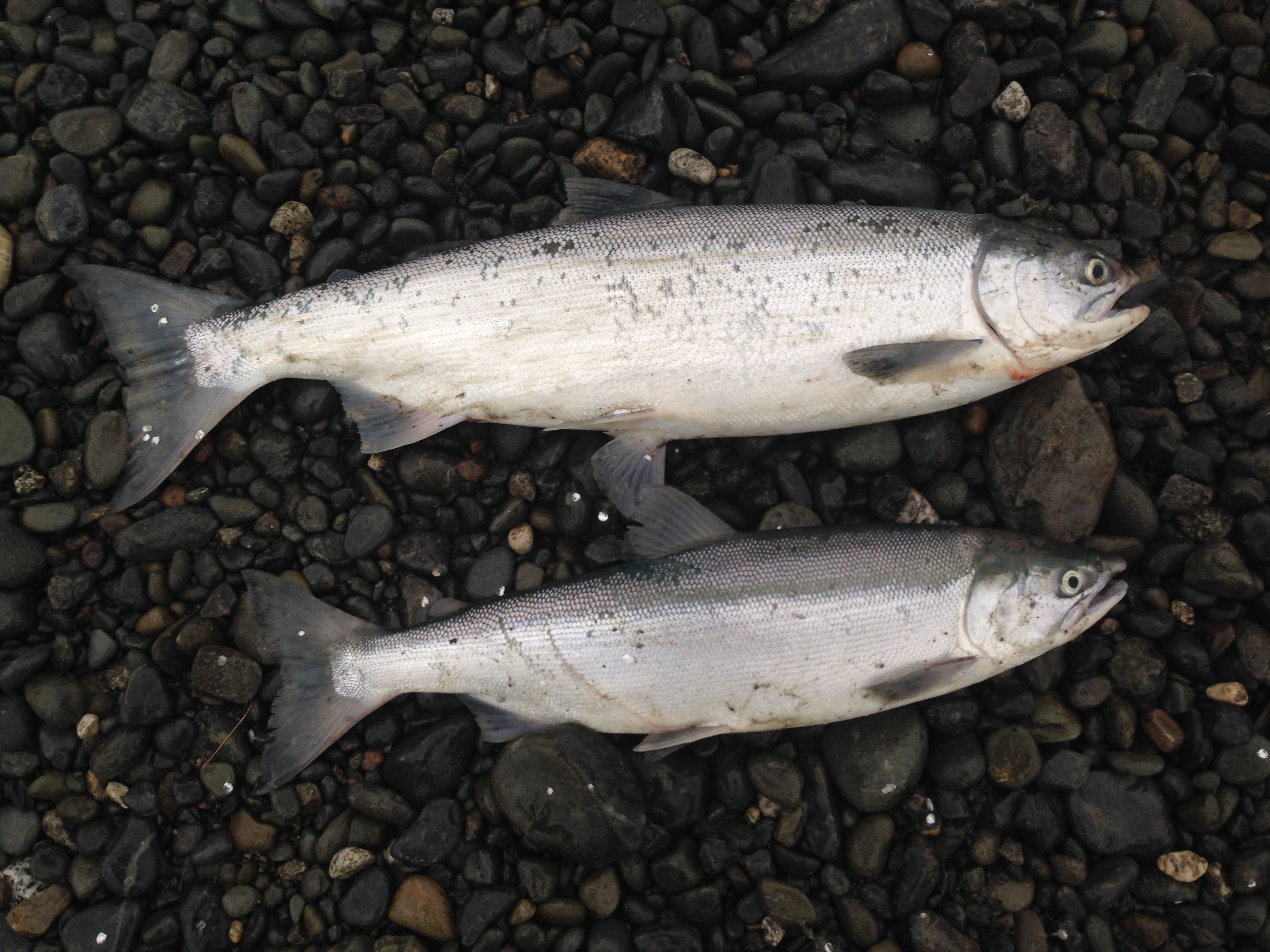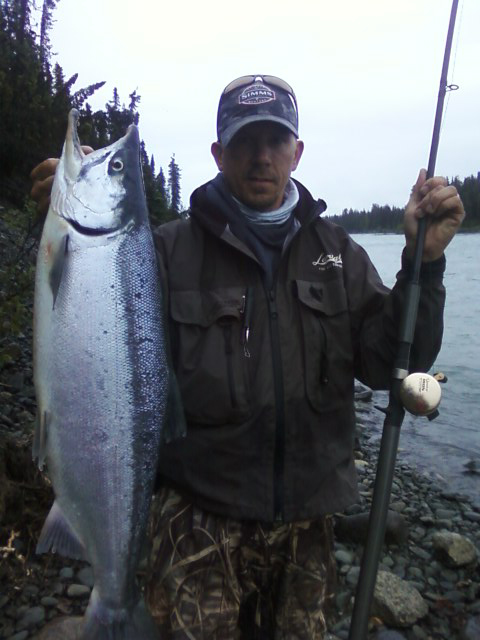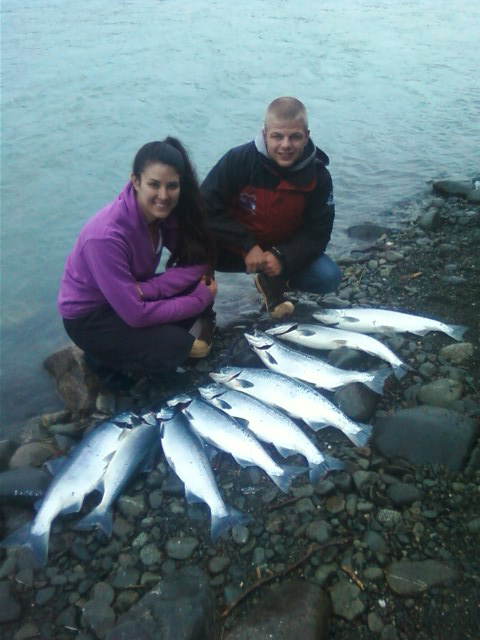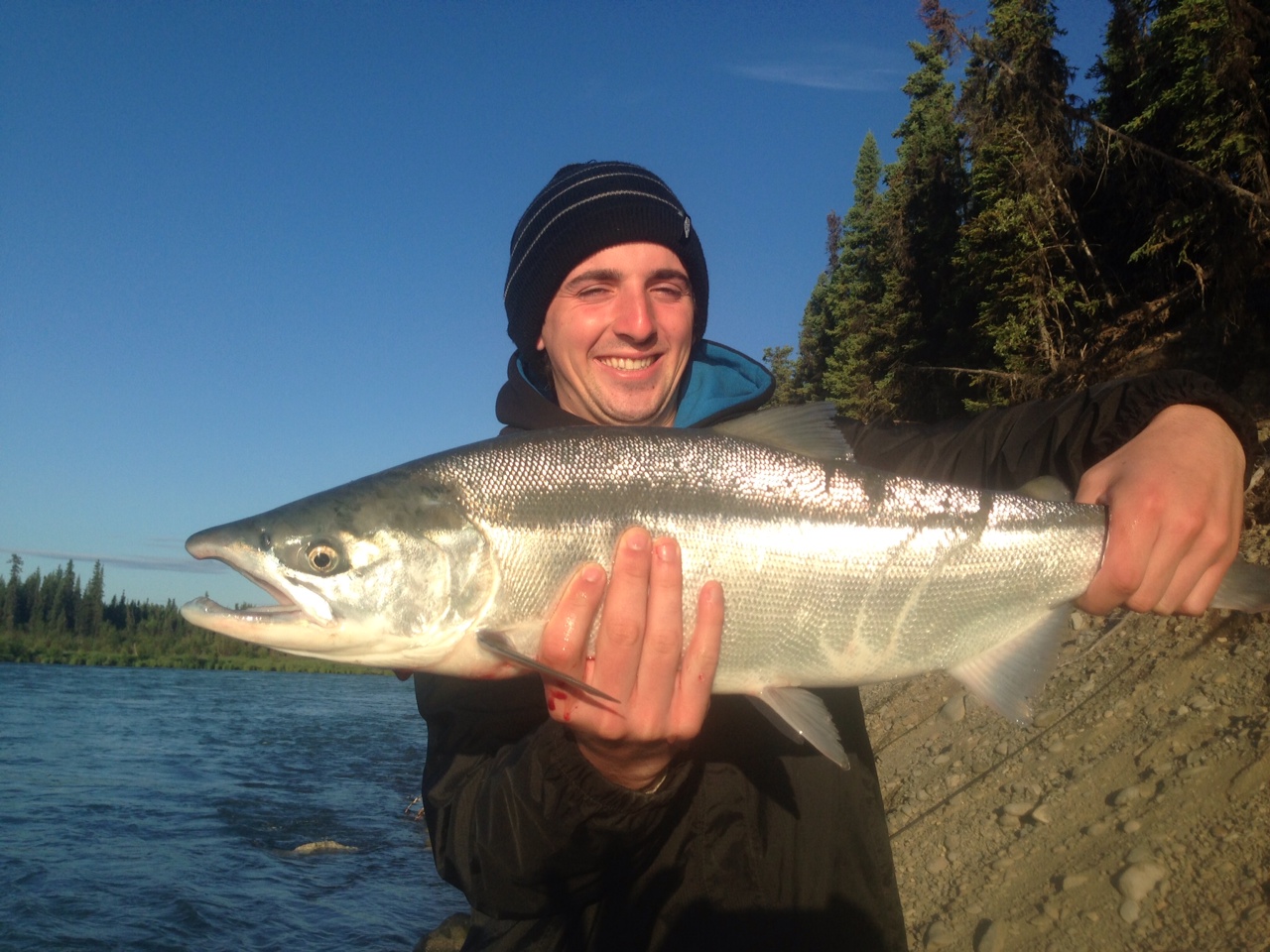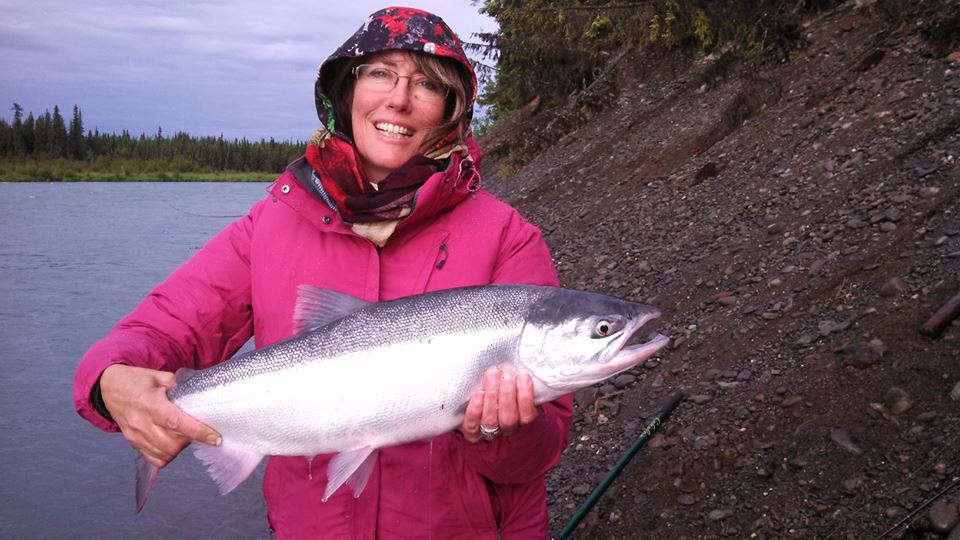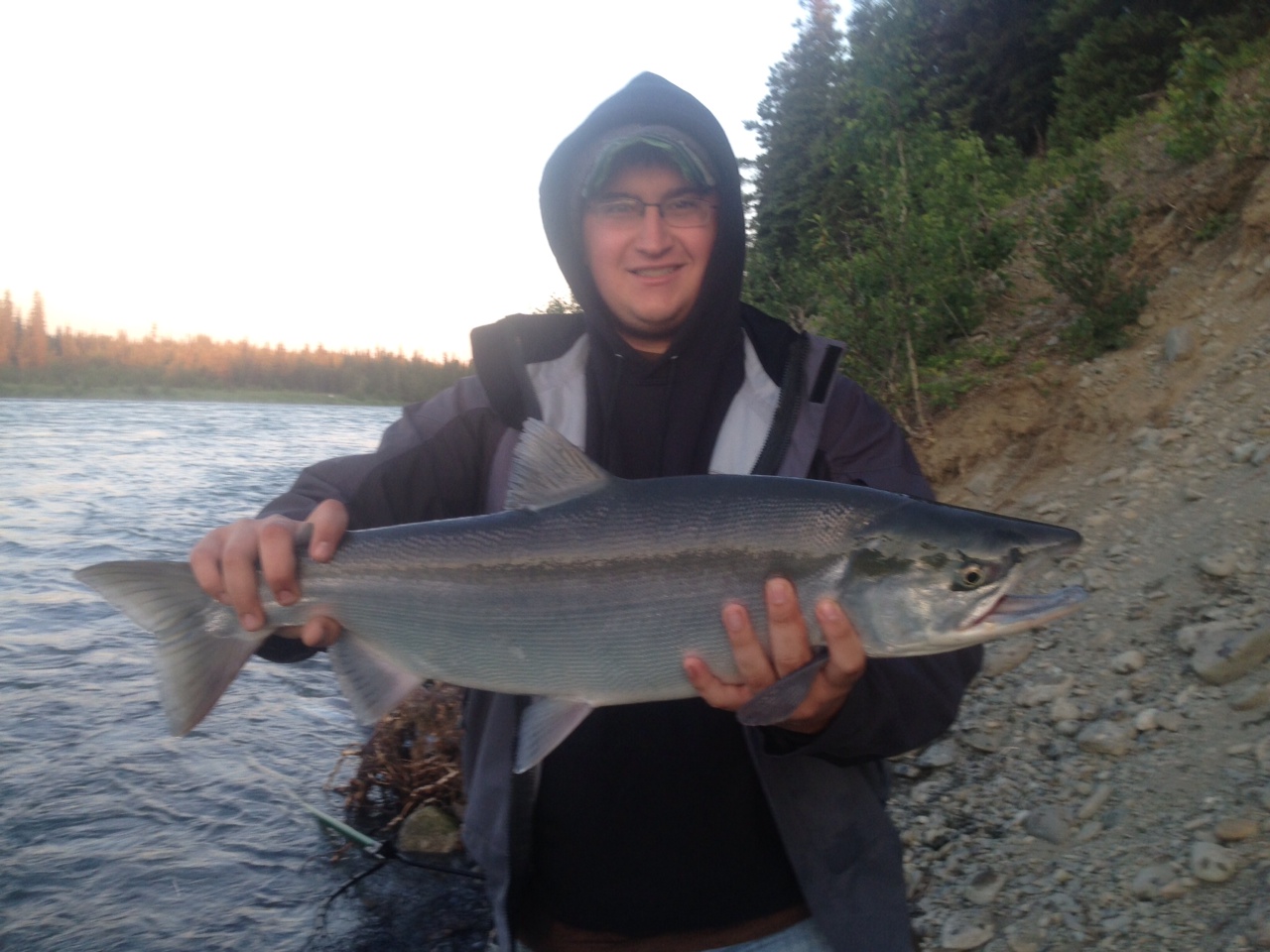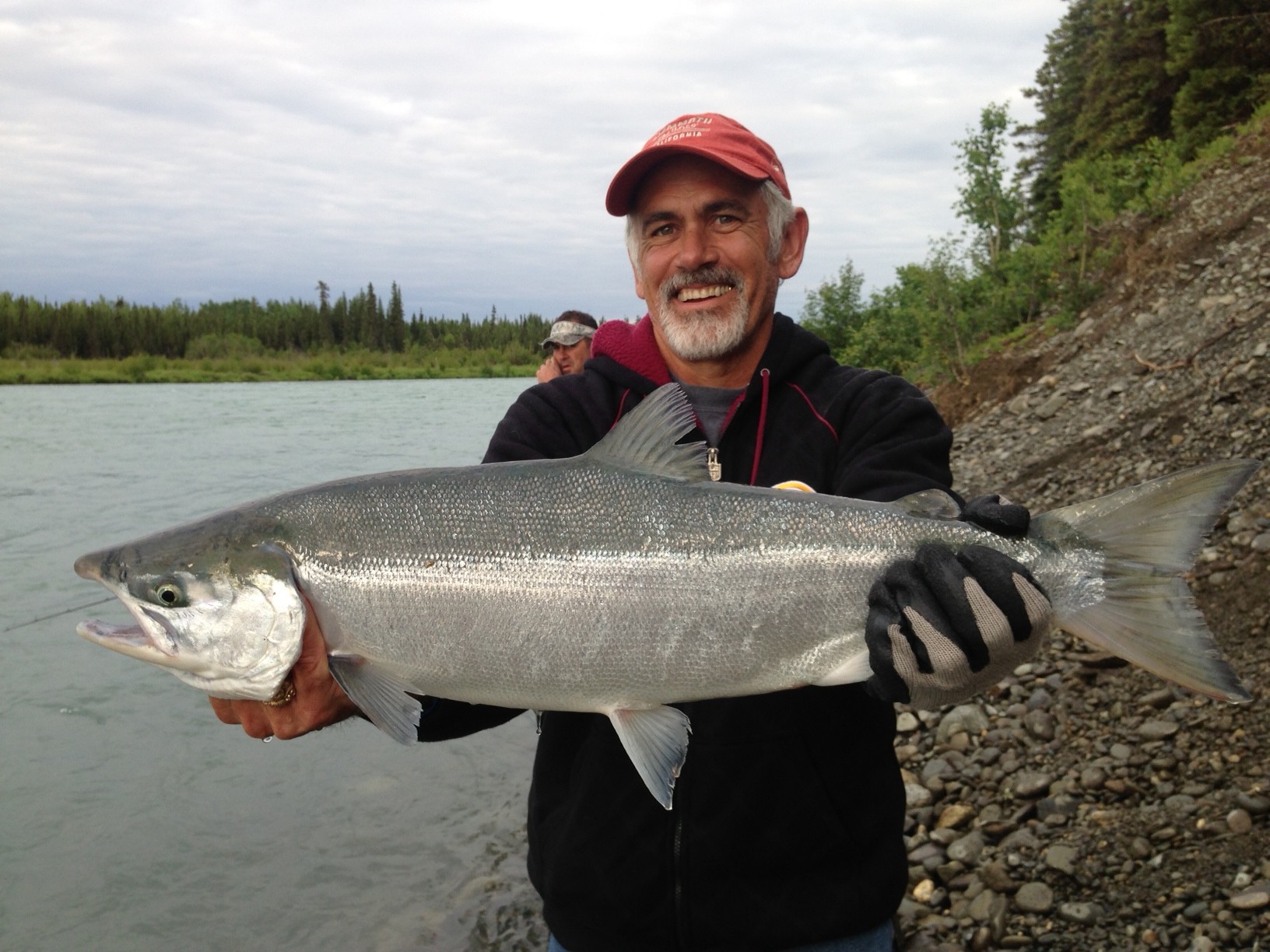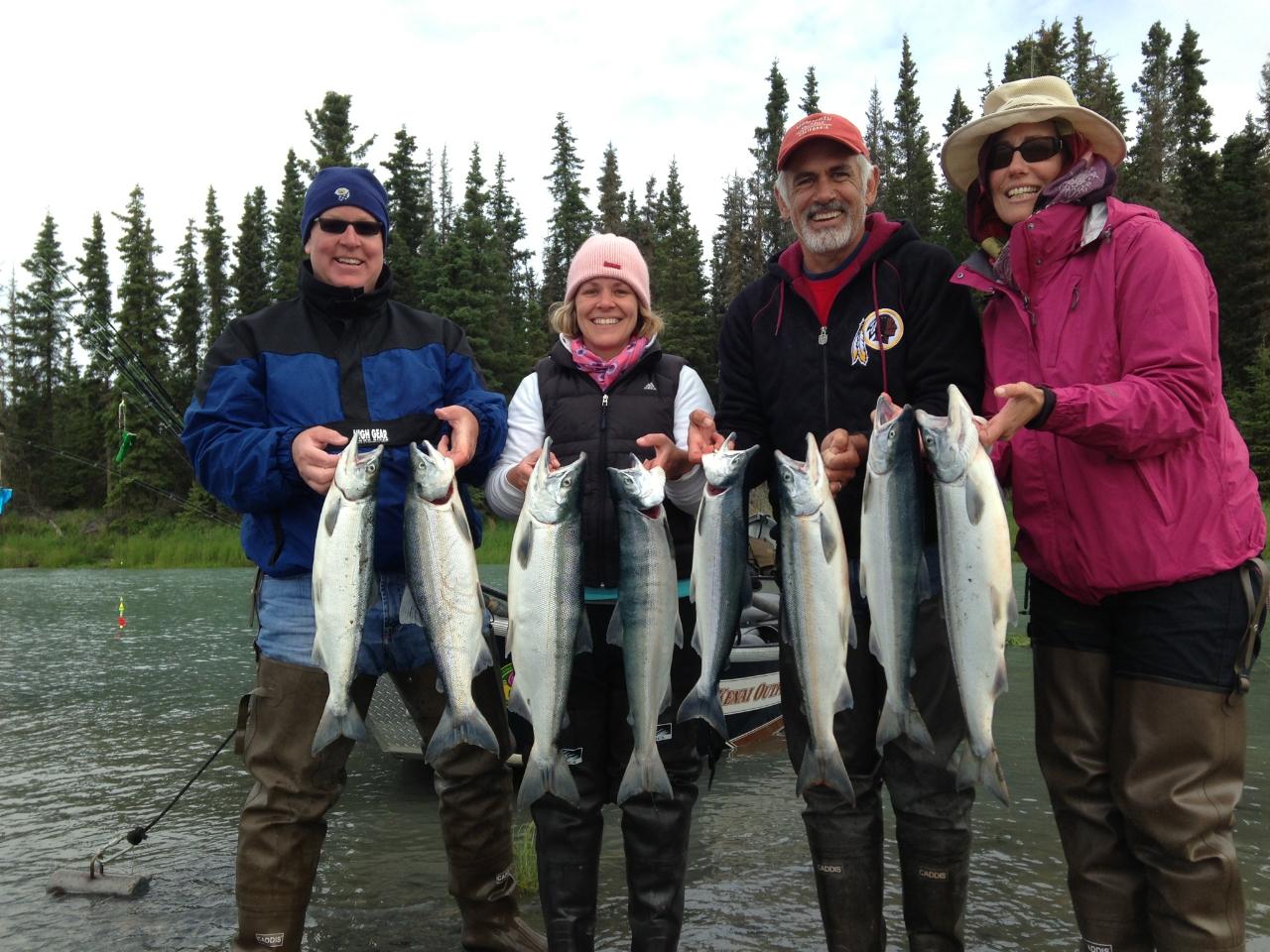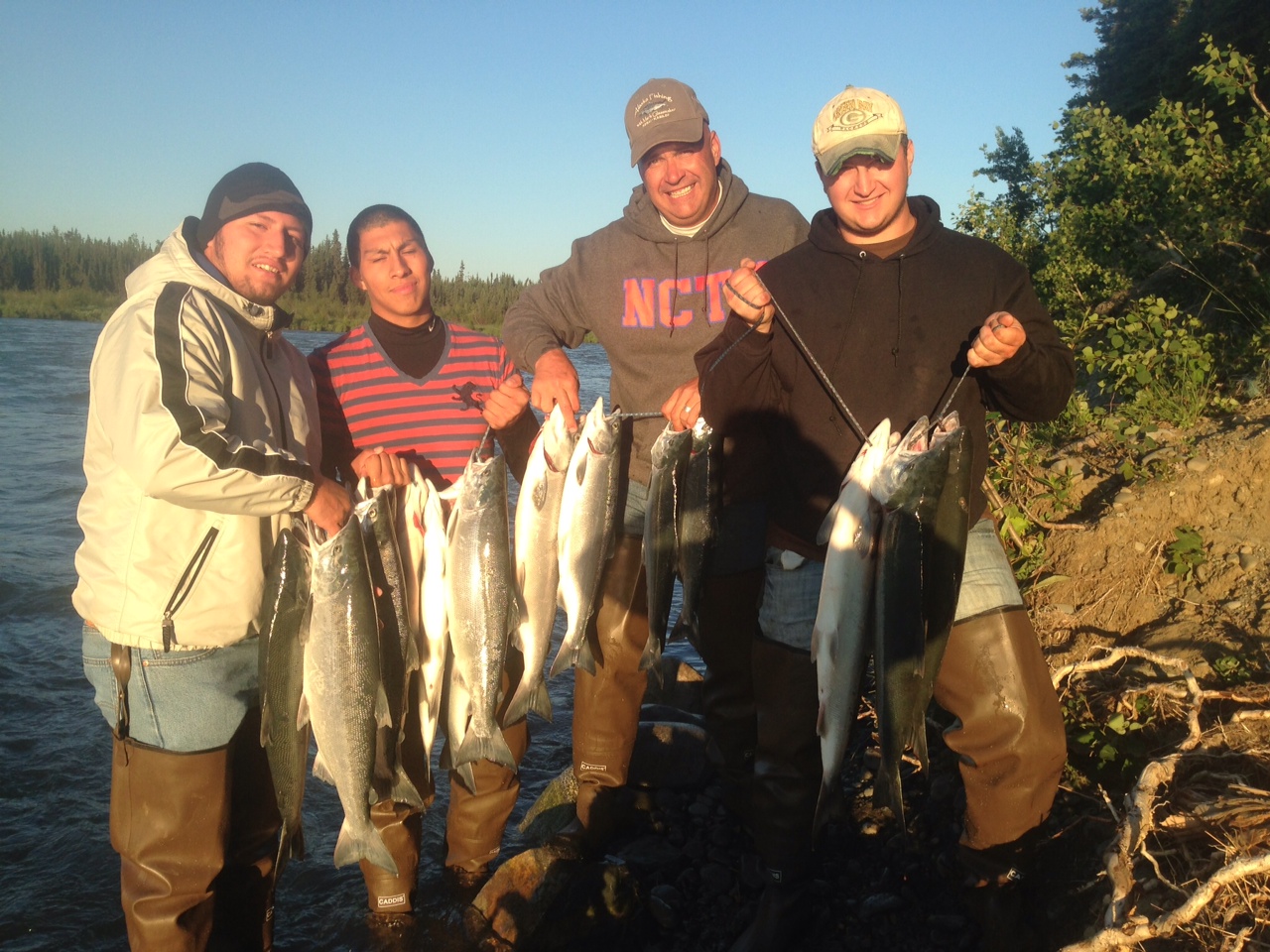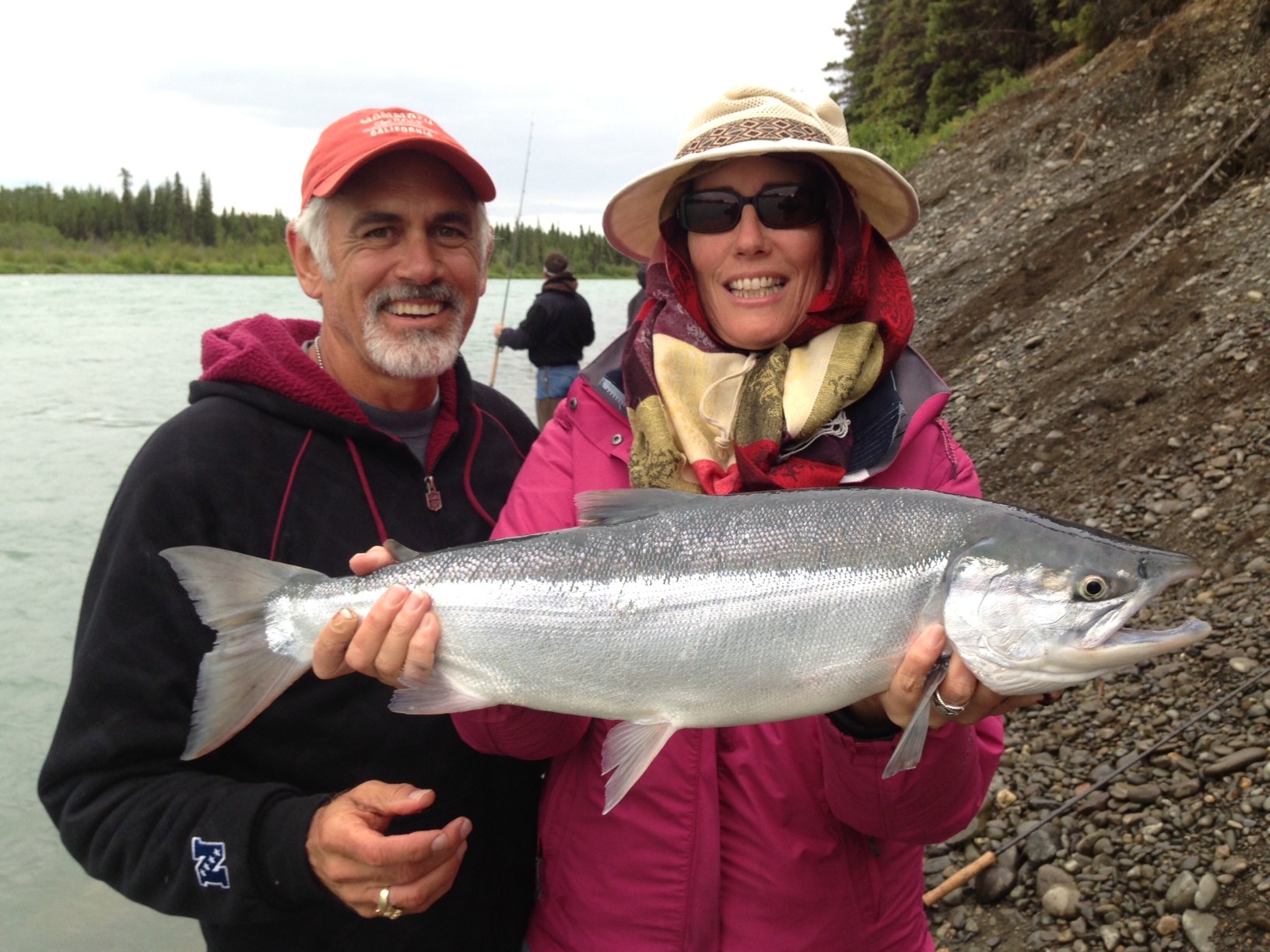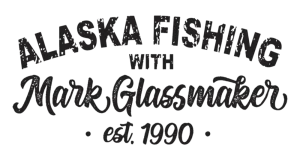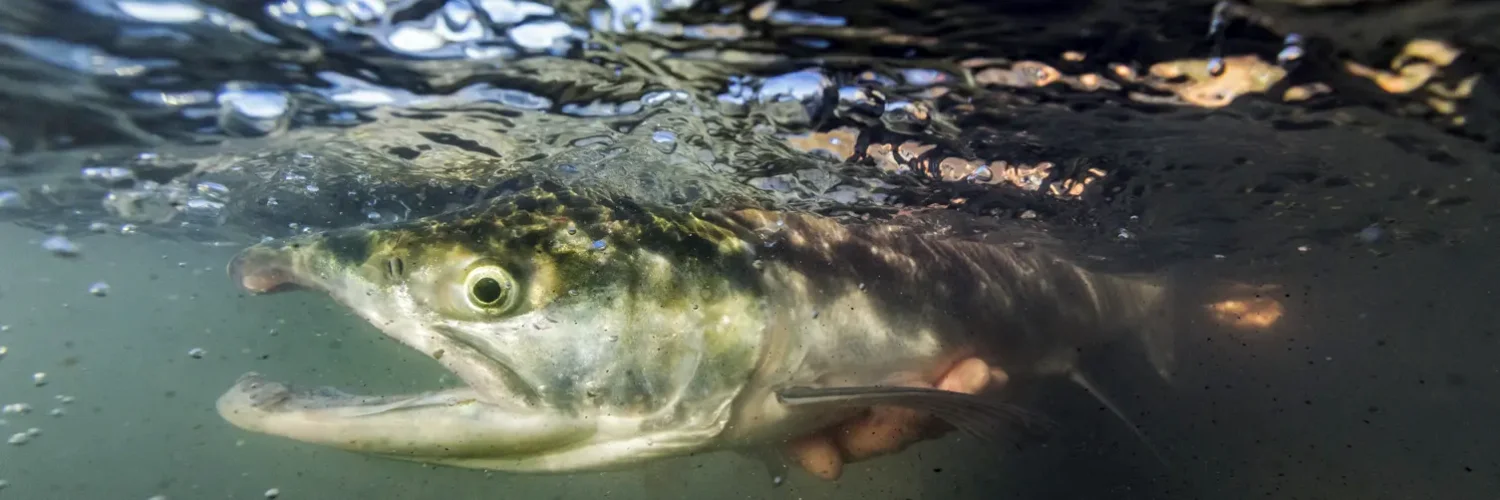
Kenai River
Sockeye Salmon Fishing Trips
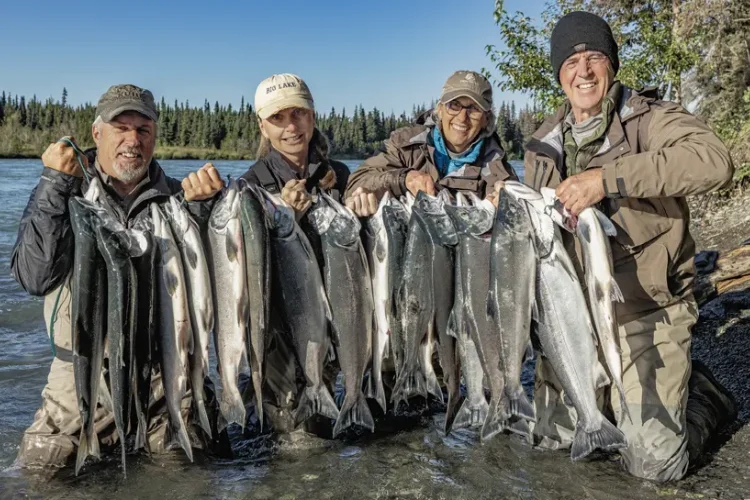
We offer Kenai River sockeye salmon trips beginning in mid-June and extending well into late August. We offer both full and half day fishing trips with most preferring a half day when pursuing a limit of Kenai River Sockeye.
The first sockeye enter the Kenai River in early June and are destined for the Russian river. The Russian is headwater tributary of the Upper Kenai River near the town of Cooper Landing. This return peaks in the second and third week of June and averages 50-75,000 fish total. The late run of Kenai sockeye is one of the largest in all south-central Alaska and recent returns have averaged close to 2.0 million sockeye salmon per season. The 2025 forecast for Kenai River sockeye is 26% higher than the ten-year average with an amazing prediction of 4.19 million fish returning to the Kenai alone.
Kenai River Sockeye Salmon: Russian River Run
The early run of Kenai River sockeye salmon originates in the Russian River, a fast-moving, crystal-clear mountain tributary of the upper Kenai River. This river is one of the most popular early-season salmon fisheries on the Kenai Peninsula, attracting anglers from around the world.
These early-run sockeye migrate through the middle and lower Kenai River during the first three weeks of June, with peak fishing typically occurring between June 12-20. Unlike the later season runs in July and August, the Russian River’s early run occurs when water levels are lower, which influences fish movement patterns. Instead of hugging the shoreline, these sockeye often take deeper routes, making only select gravel bars consistently productive for anglers targeting their limits.
Kenai River Sockeye Salmon: The Late Run
The peak of the Kenai River sockeye salmon run occurs in July, bringing a massive influx of fish into the system. The first arrivals begin trickling in during the first couple of weeks, but the greatest numbers surge during the last two weeks of July and continue into the first week to ten days of August.
During this six-week window, more than two million sockeye salmon can enter the Kenai River, with daily counts sometimes exceeding 100,000 fish moving upstream. These salmon are known for their tendency to travel close to the shoreline, making for exceptional fishing opportunities. Numerous productive gravel bars along the river provide ideal spots for intercepting these powerful, ocean-fresh sockeye, drawing thousands of anglers eager to take part in one of Alaska’s most renowned fisheries.
Kenai Sockeye Salmon Fishing Rates
June / July / August
Kenai Half Day – $295pp
Up to 5 hours
Kenai Full Day – $350pp
Up to 8 hours
Where Are Our Kenai River Sockeye Salmon Fishing Trips?
Kenai River sockeye salmon travel at an average speed of about one mile per hour after entering the river from Cook Inlet. They arrive at various stages of the high tide, moving upriver in dense schools, especially near tidewater. As these tidal pushes progress upstream, the fish begin to disperse, resting in eddies along the way and decreasing in number due to natural separation and angler harvest.
For the best Kenai River Sockeye fishing and highest-quality catch, many anglers prefer targeting sockeye within hours of their transition from saltwater. At this stage, they are in peak condition, traveling in large numbers, and their eating quality is at its finest.
Things To Know About Kenai River Sockeye Salmon:
*Kenai River sockeye salmon spend one to two years in freshwater as juveniles before migrating to the ocean, where they remain for two to three years before returning to spawn. While fish lengths vary by river, Upper Cook Inlet sockeye that spend two years in the ocean typically grow to about 18 to 22 inches, while those spending three years reach 20 to 24 inches. Since the 1980s, the majority of Kenai River sockeye salmon have spent three years in the ocean before returning to spawn.
*Over the last four years Kenai River late run sockeye salmon returns have been from 1.5 to 2.4 million fish annually.
*The Alaska Department of fish and Game operates a sonar site located at Kenai River mile 19 just a few miles downstream from the Soldotna Bridge. It is estimated that sockeye reach the sonar site less than 24 hours after leaving the ocean (Cook inlet).
How We Fish For Sockeye Salmon on the Kenai
Our Kenai River Sockeye trips are primarily done using a technique known as “flossing” or “lining.” This method involves repetitively swinging a weighted setup—often up to 1.5 ounces—a long leader, and a sharp hook perpendicular to the current in nearshore waters. The goal is to drift the leader naturally through the water column, allowing it to pass into the open mouth of a migrating sockeye salmon as it moves upriver in shallow water close to the bank.
Since sockeye salmon do not aggressively strike bait or lures once they enter freshwater, flossing is the most effective way to hook them consistently. This technique requires precise timing, repeated casting, and an understanding of fish movement patterns to maximize success.
We do utilize our custom 20-foot Classic Willie Power Boats with 50 HP Yamaha Four Stroke Motors to access the Kenai River sockeye trips, and you will have a safe and comfortable trip in these custom-made boats designed just for the Kenai River.
Kenai River Sockeye Salmon Limits
The limits for Kenai River Sockeye Salmon fishing trips change throughout the season. The limit for the early season is three fish per day, per person, until June 20 when the limit increases to six fish per person, per day. The six fish limit extends through August 15 and then goes back to three fish per person, per day on Aug 16.
Aug 16 – June 19: 3 fish per person, per day.
June 20 – Aug 15: 6 fish per person, per day.
FAQ’s About Sockeye Salmon Fishing
Where is the best place to fish for sockeye salmon?
What month is best for salmon fishing in Alaska?
How to catch sockeye salmon in Kenai River?
How much does an Alaskan salmon fishing trip cost?
Where is the best sockeye salmon fishing?
Online Booking Options For Sockeye Salmon Fishing
We also specialize in putting together custom fishing and lodging packages for our guests who want to spend a few days fishing for multiple species and experience more of Alaska. Feel free to call us to discus your perfect fishing itinerary.
More Information on Kenai River Sockeye Salmon Fishing Trips
After several years of falling short of minimum escapement objectives, the 2025 late run of Kenai River king salmon narrowly met the recovery threshold of 14,250 large kings (greater than 34 inches). By the final day of counting, the cumulative sonar estimate stood at 15,015 fish. This benchmark was established under the Kenai River Late …
In a year that saw record sockeye returns to the Kenai River, the Kasilof River delivered an equally impressive showing. By August 9, a total of 1,197,471 sockeye had passed the sonar at river mile 8, surpassing the previous record of 971,604 set in 2022. Peak run timing occurred between June 30 and July 26, …
The 2025 silver salmon run on the Kenai River has been noticeably stronger than in 2024. Last year, anglers faced bait closures and reduced limits, but this season brought a robust return that provided excellent fishing opportunities. Key highlights: Bait opened Aug. 16, right as fishing pressure shifted from sockeye to silvers, with fresh coho …
The summer of 2025 produced the largest return of sockeye salmon to the Kenai River since modern sonar counting began in 1987. By August 19, a staggering 4,252,497 sockeye had passed the Alaska Department of Fish & Game sonar station at river mile 19. The surge began on July 16 with a daily count of …
The 2025 Kenai River Sockeye Salmon Return is projected to be 25% higher than the ten year average. ADFG Advisory Announcement For Immediate Release: January 27, 2025 CONTACT: Kyle Gatt, Research Biologist (907) 260-2923 Jack Erickson, Regional Research Coordinator (907) 267-2376 According to an advisory announcement dated January 25, 2025 the projection for the 2025 …
Kenai River Sockeye Fishing: 468,000 fish in three days! With the 2024 fishing season officially behind us, it’s finally time to look back and recap another blockbuster season for us at Alaska Fishing. Cindy and I are profoundly grateful for all the amazing customers, both new and old, and also for our incredible help as …
